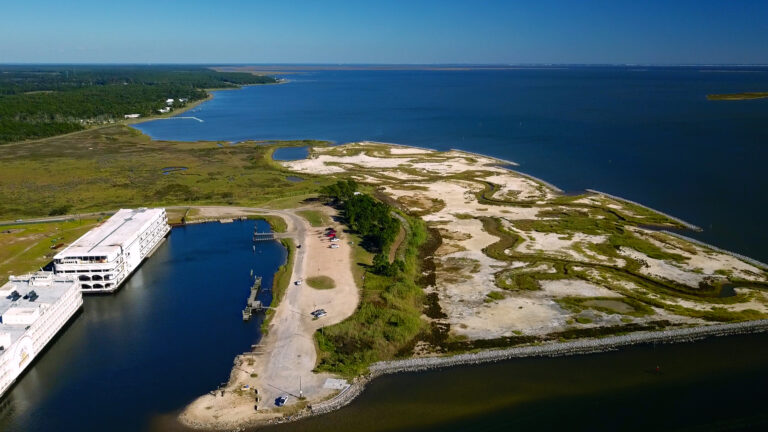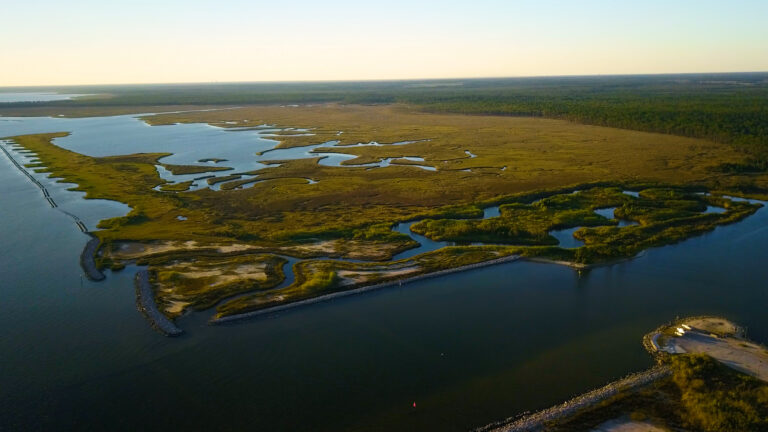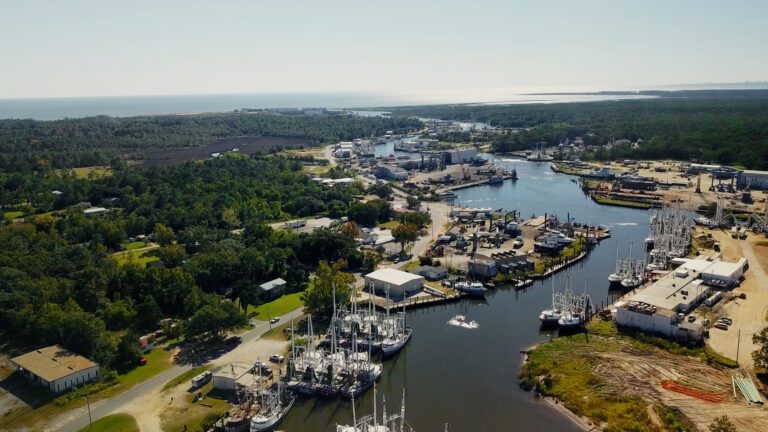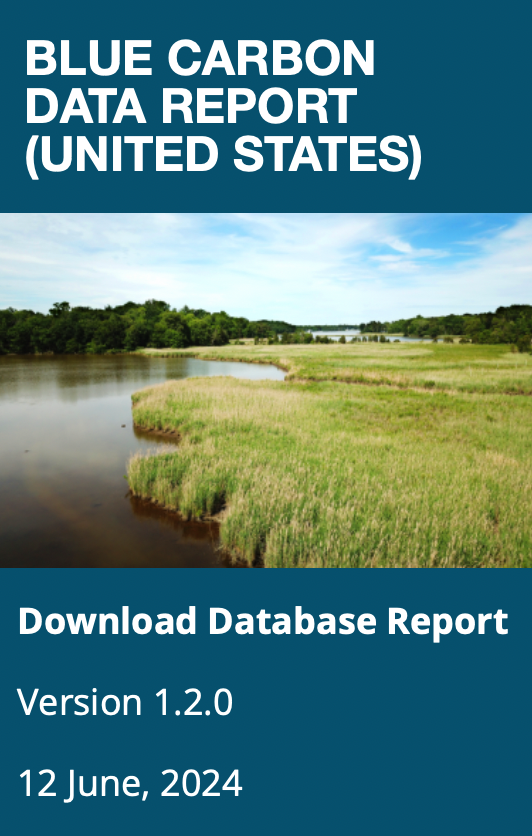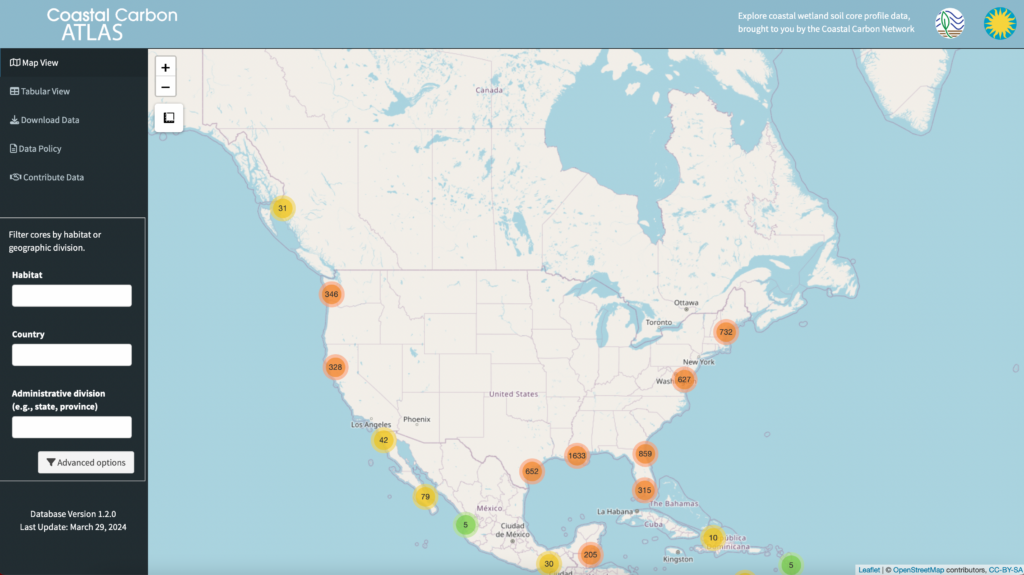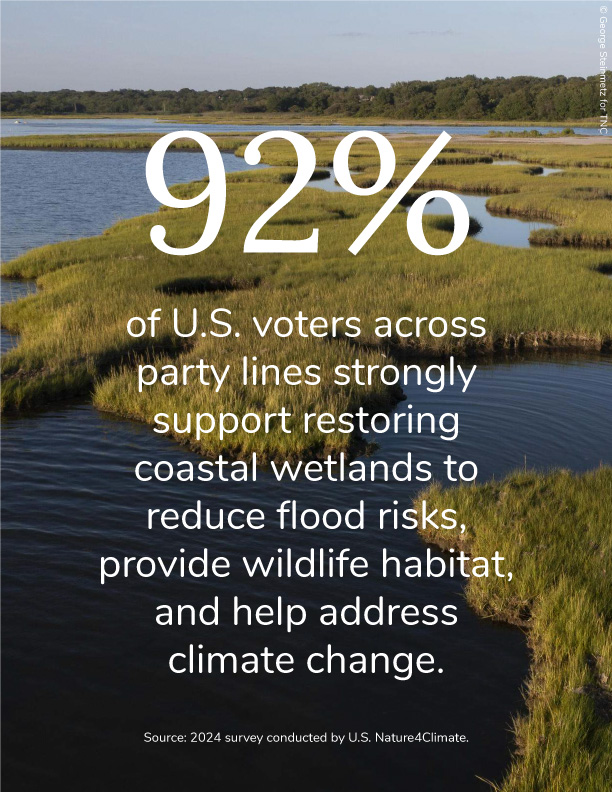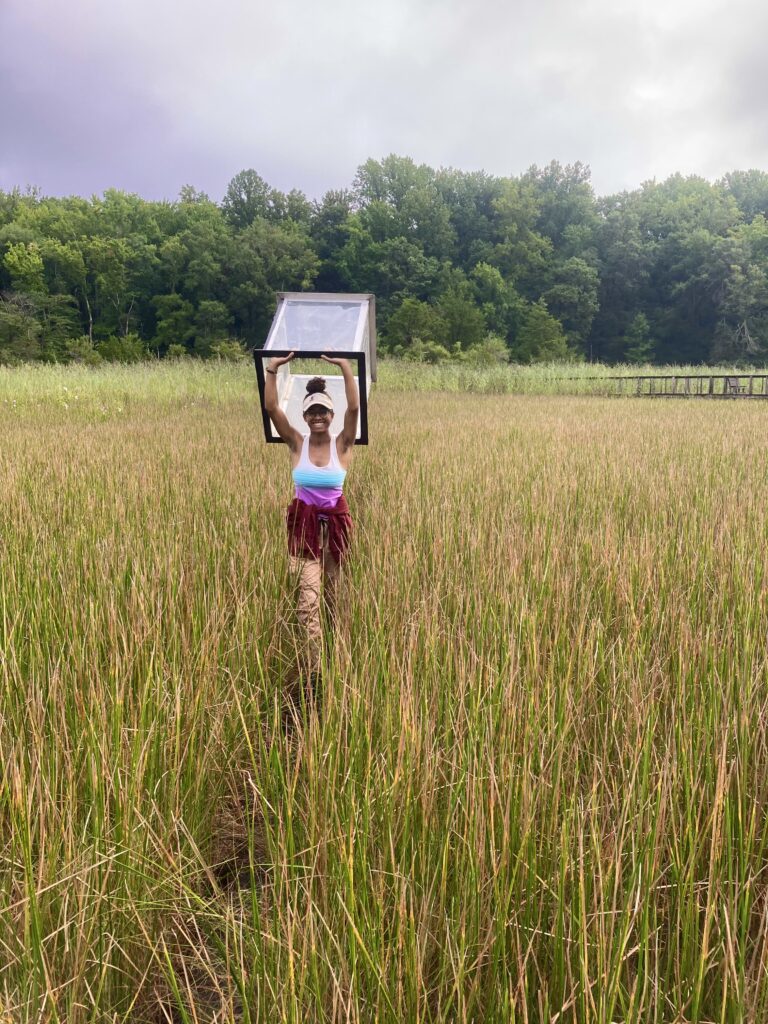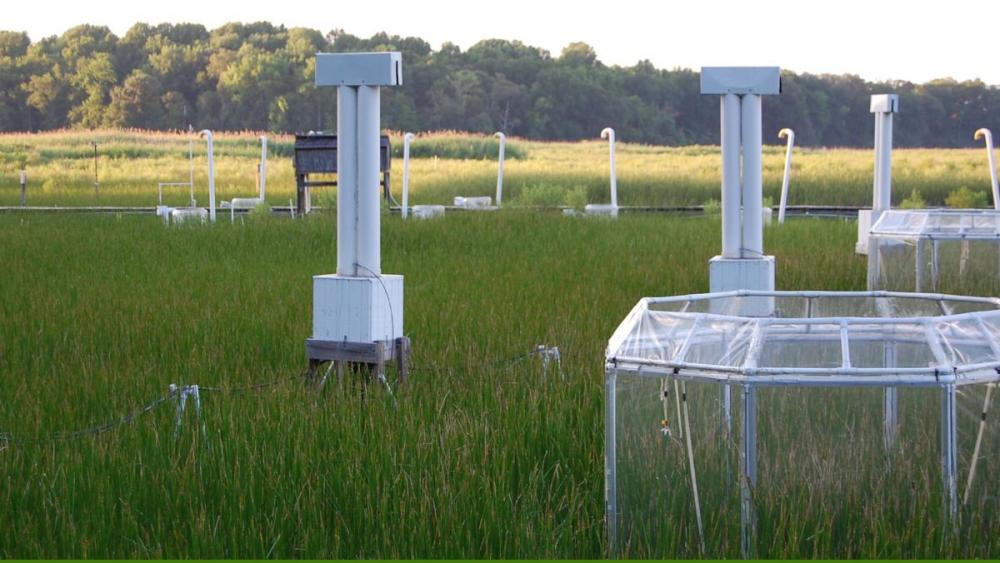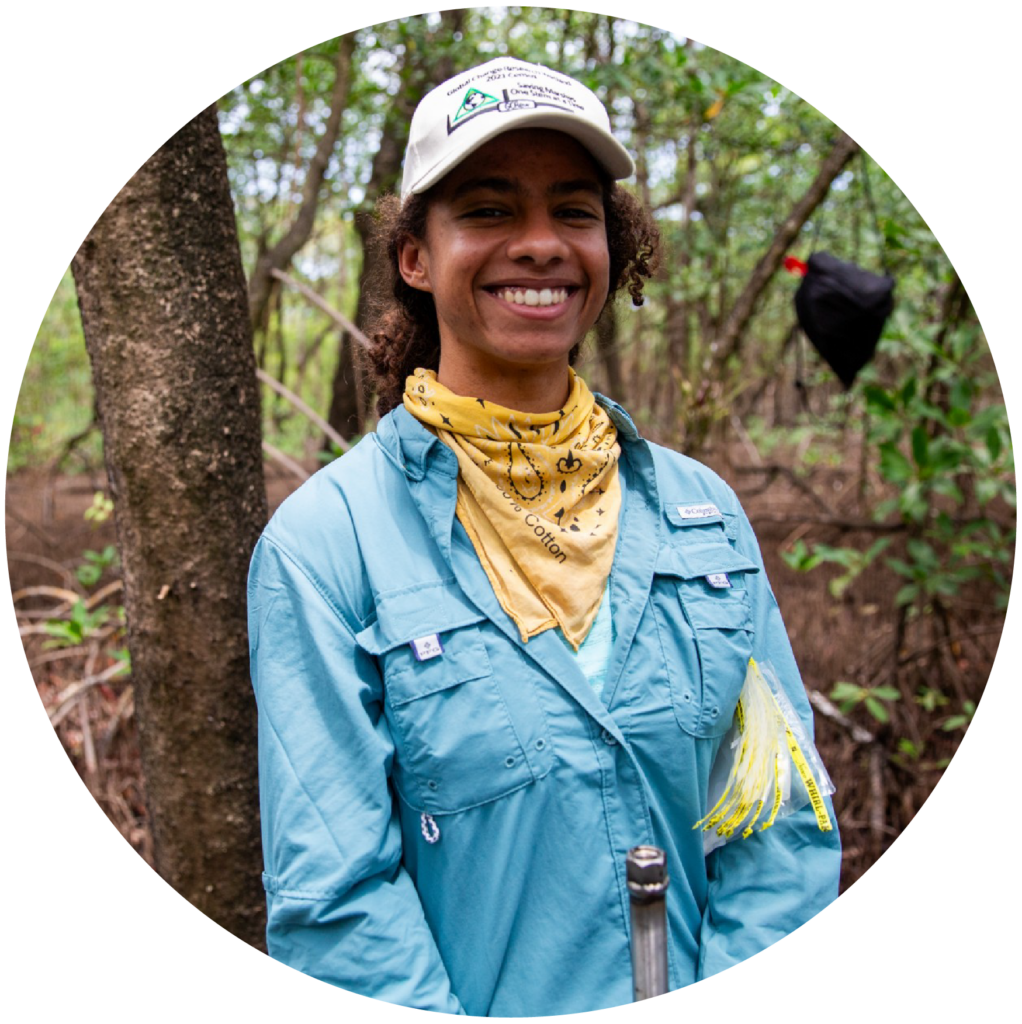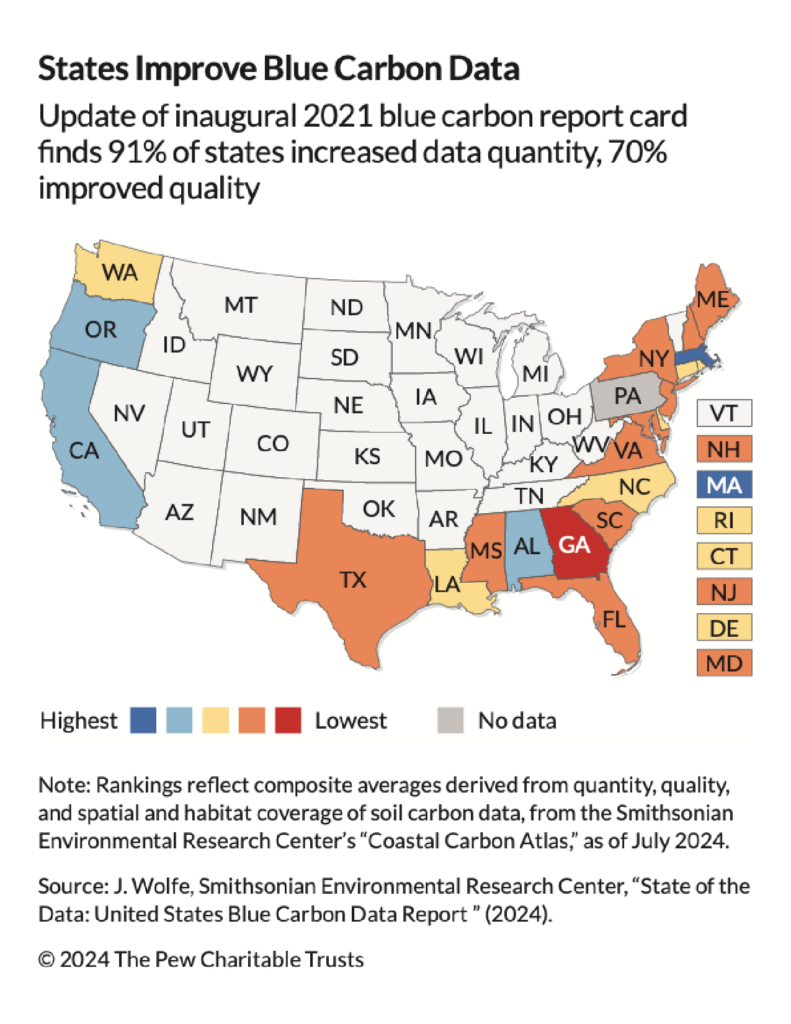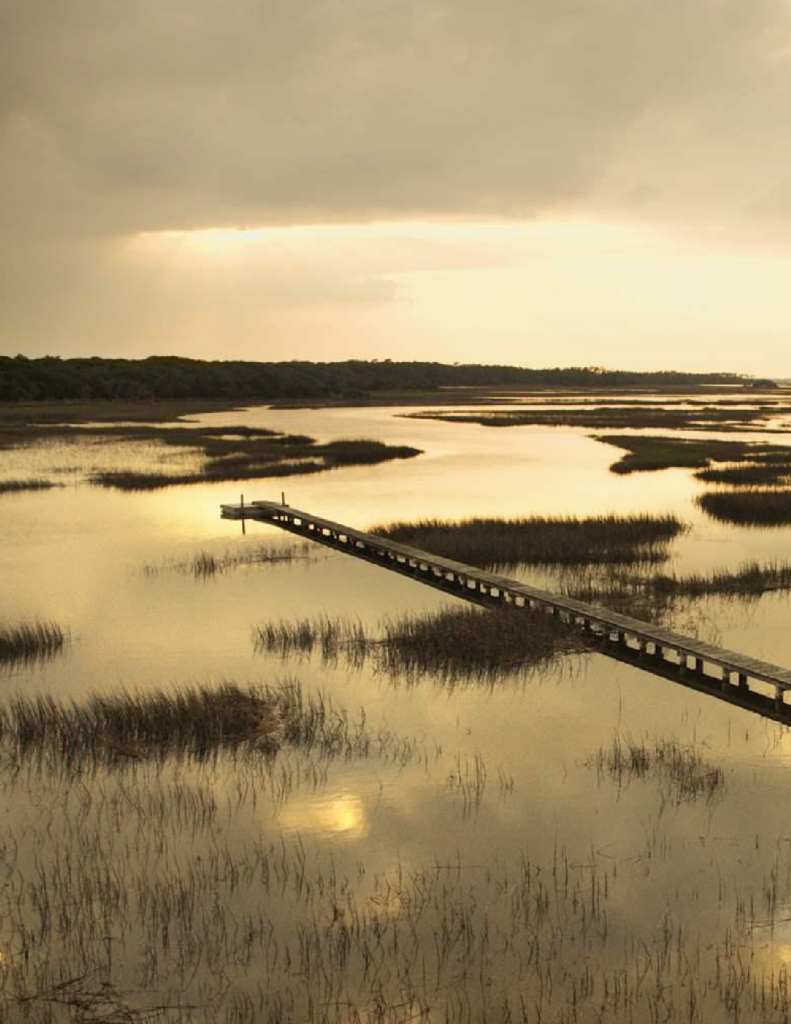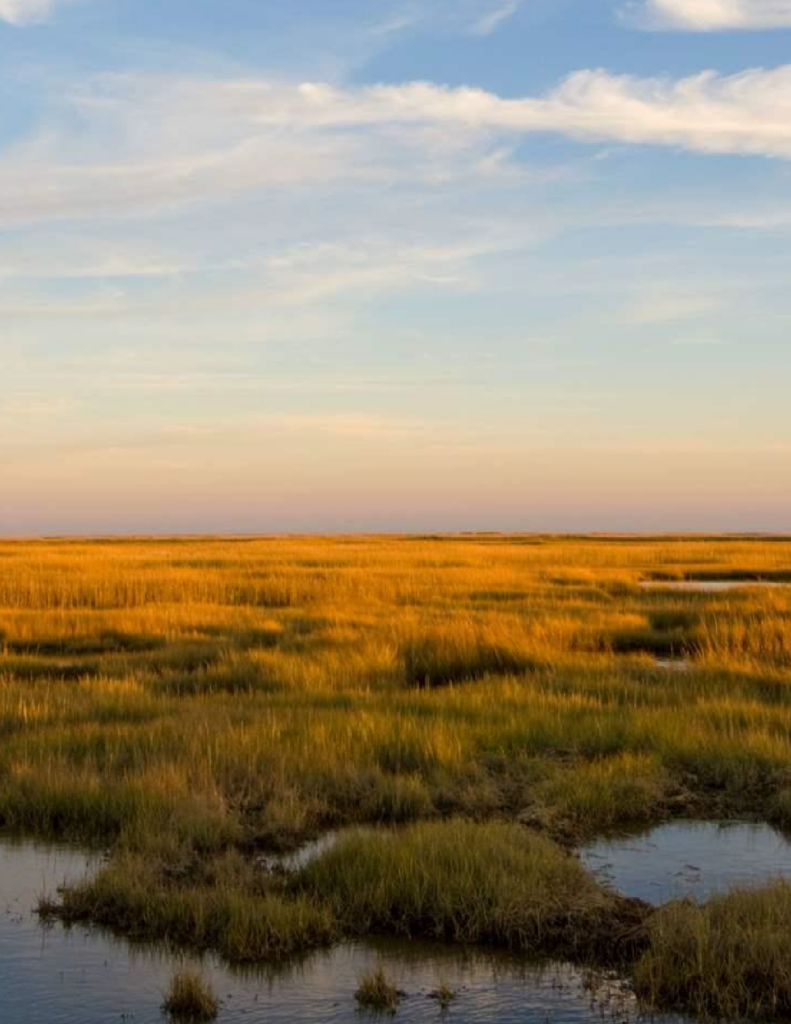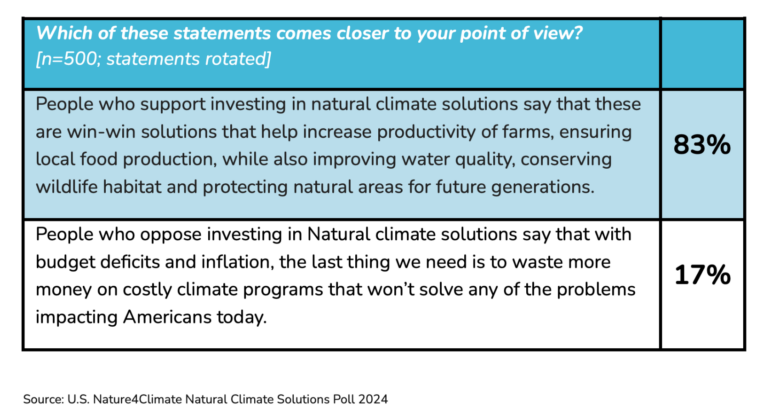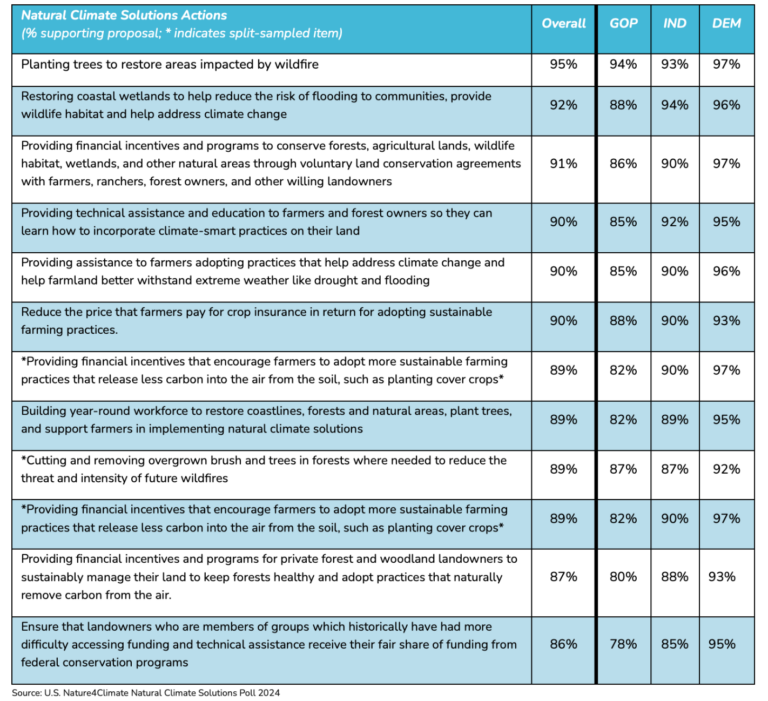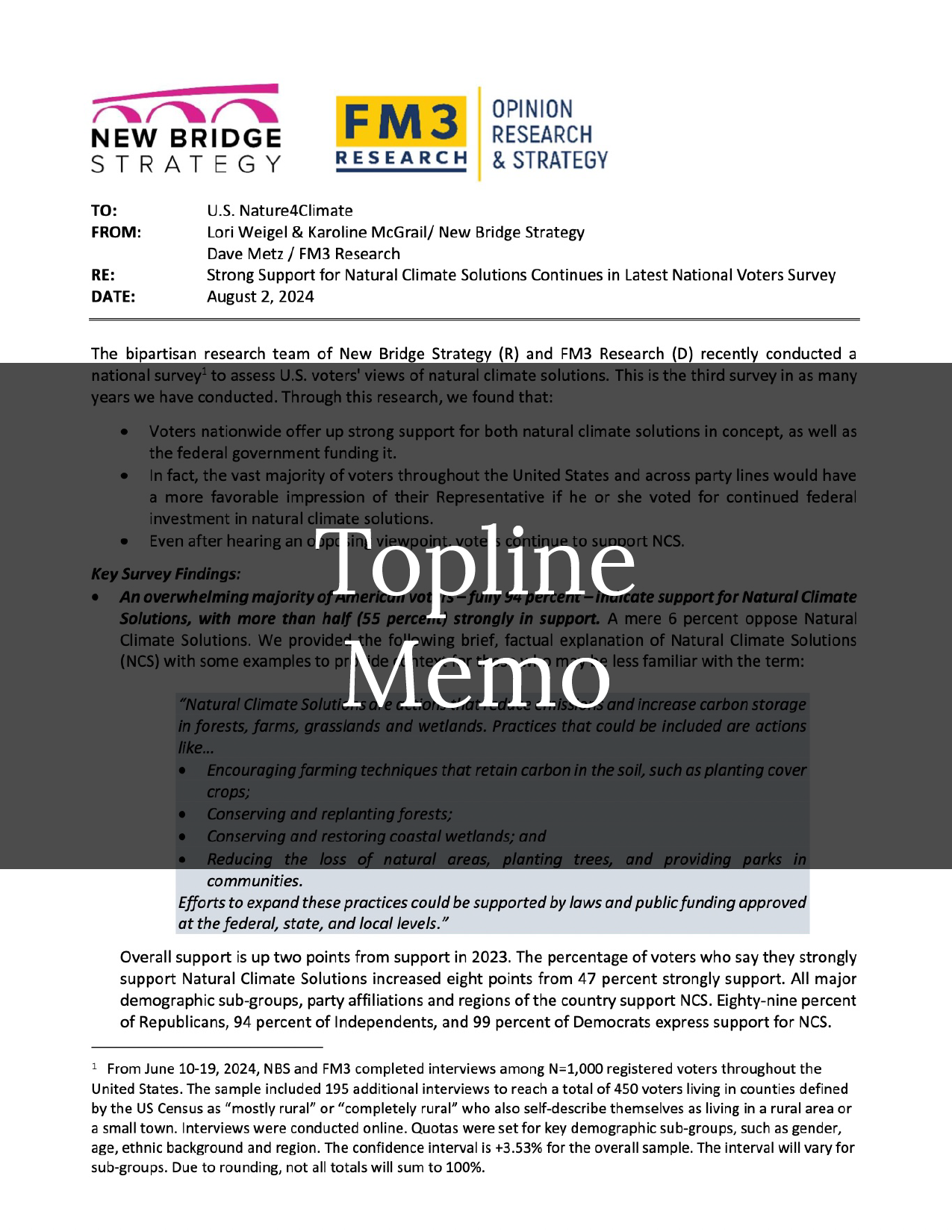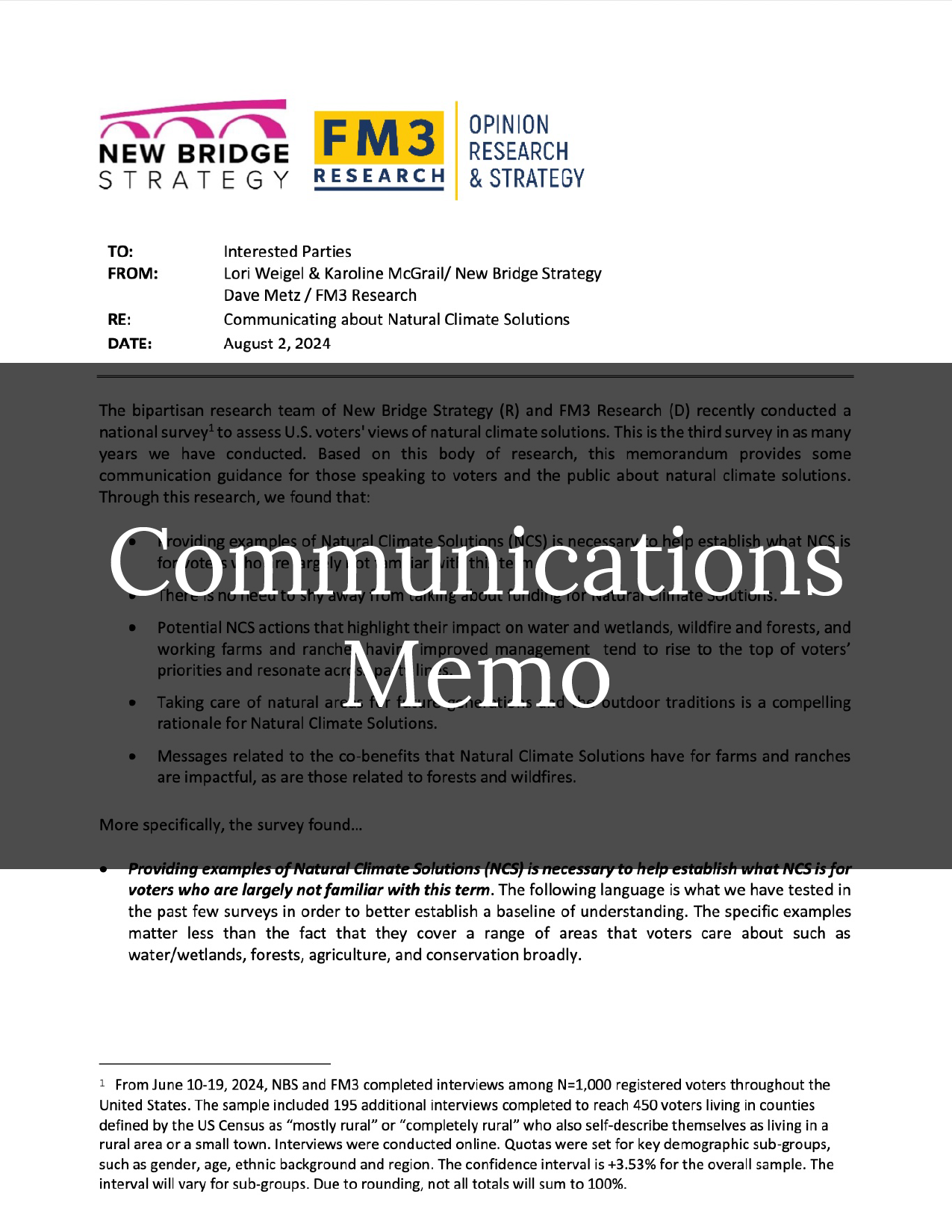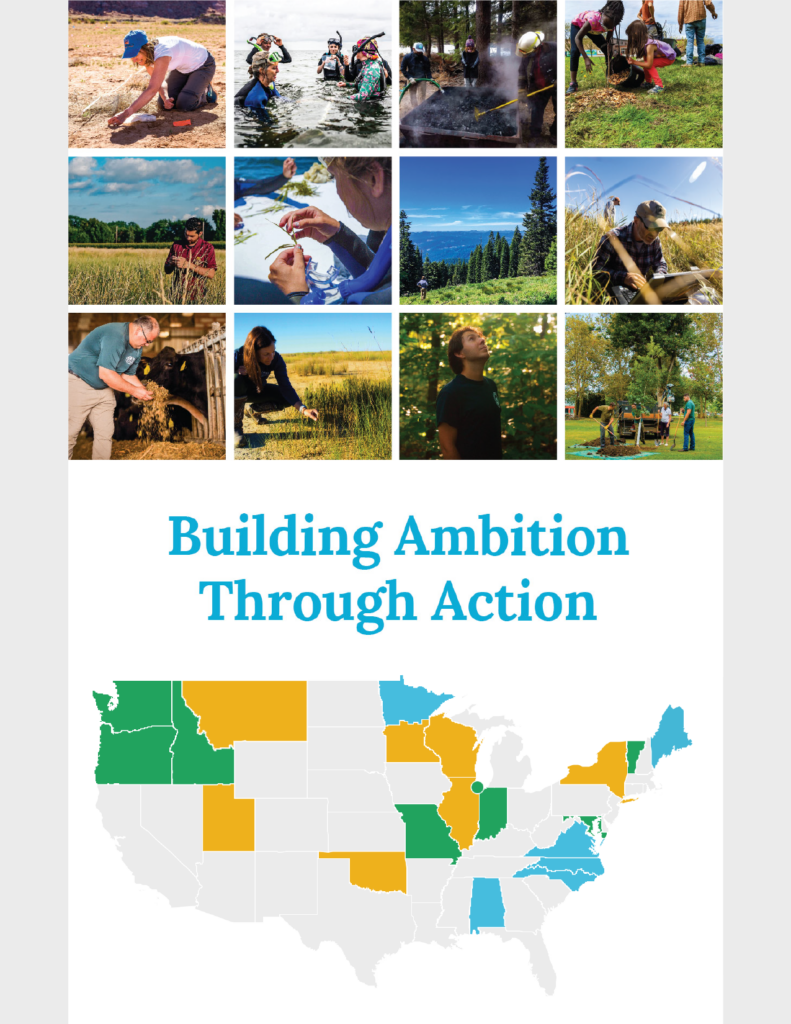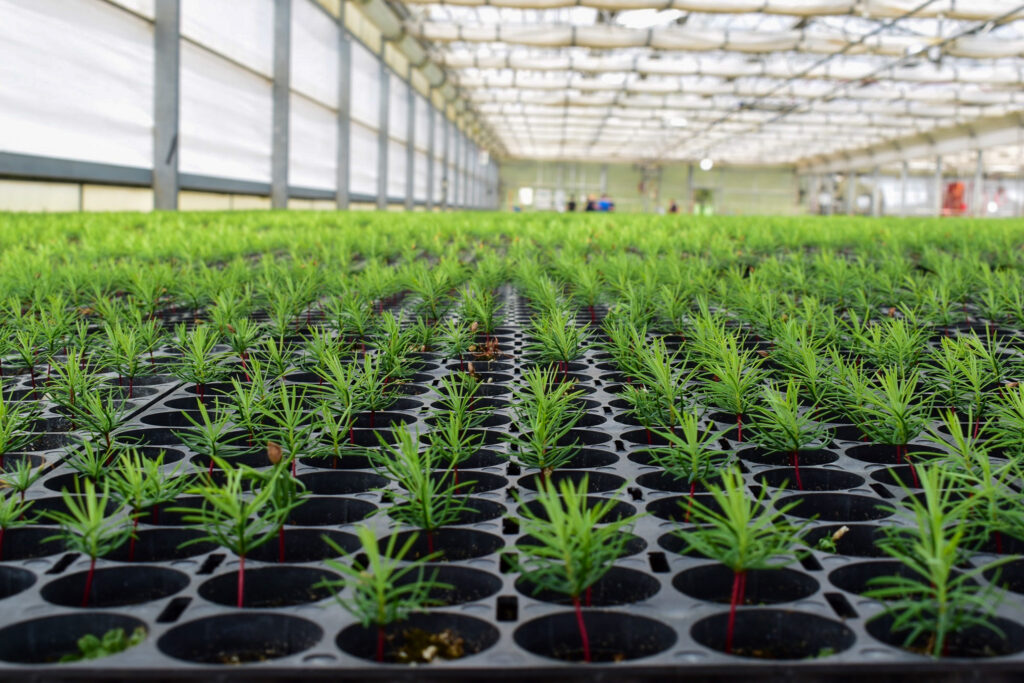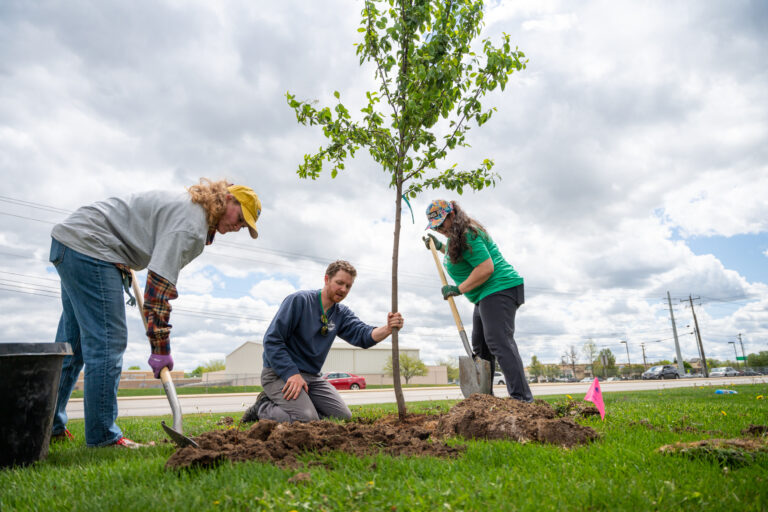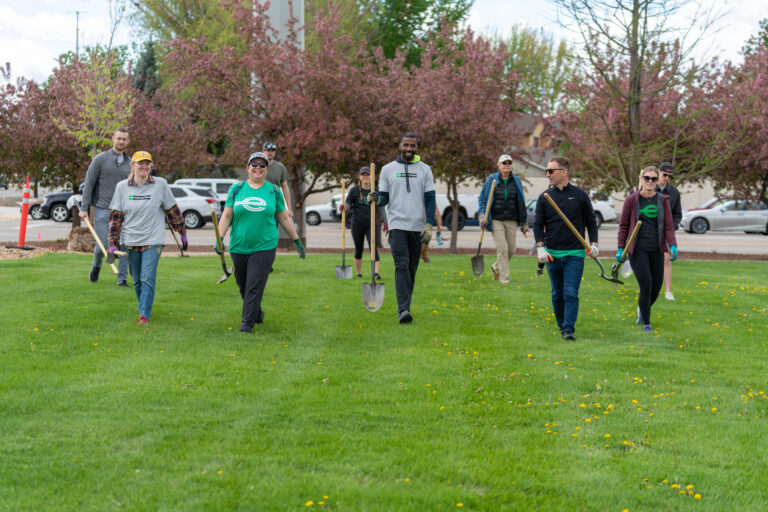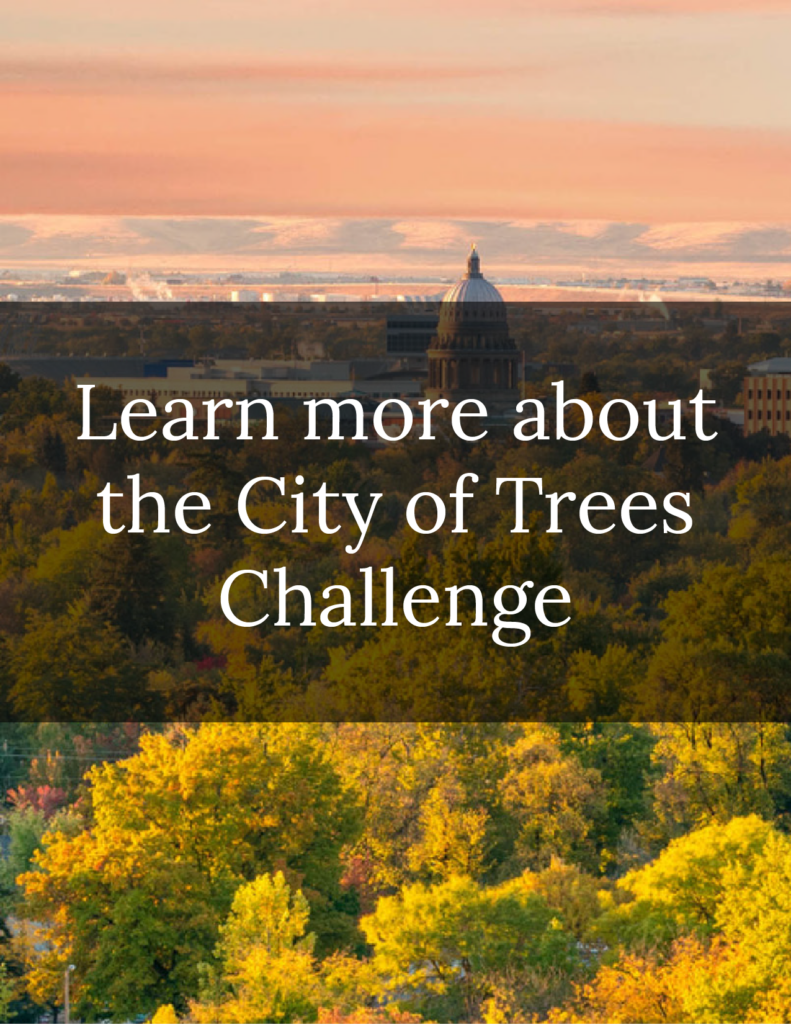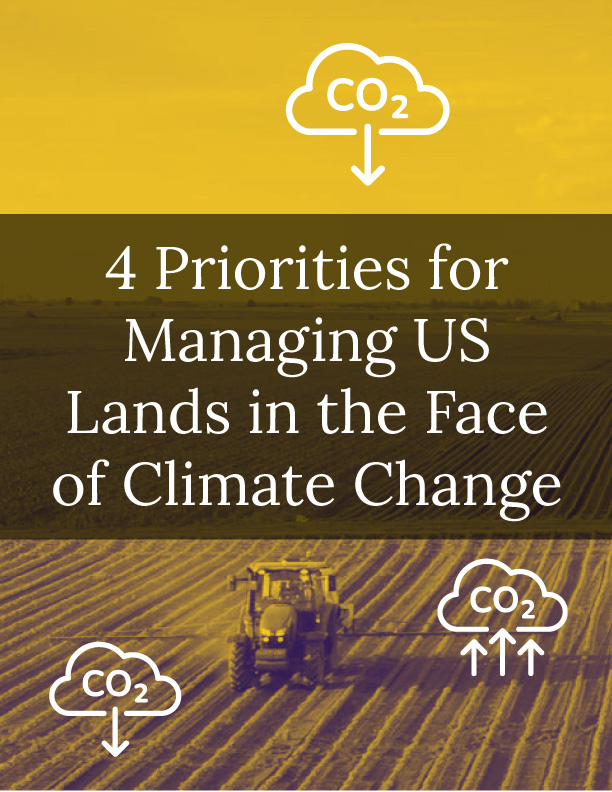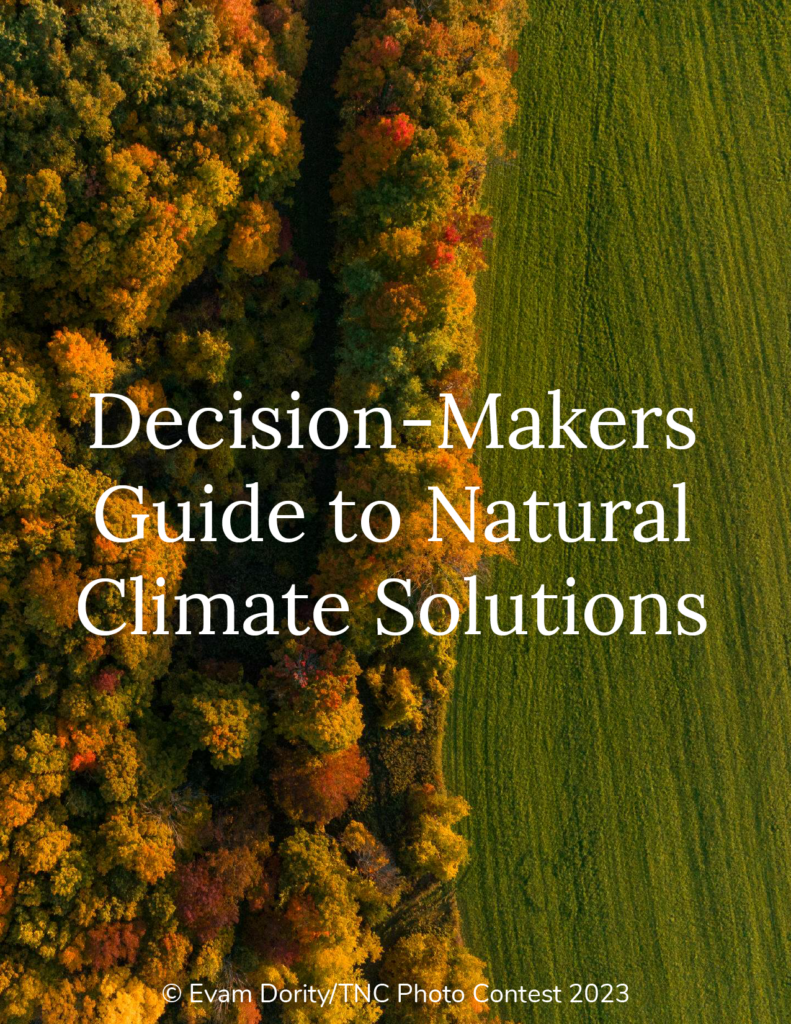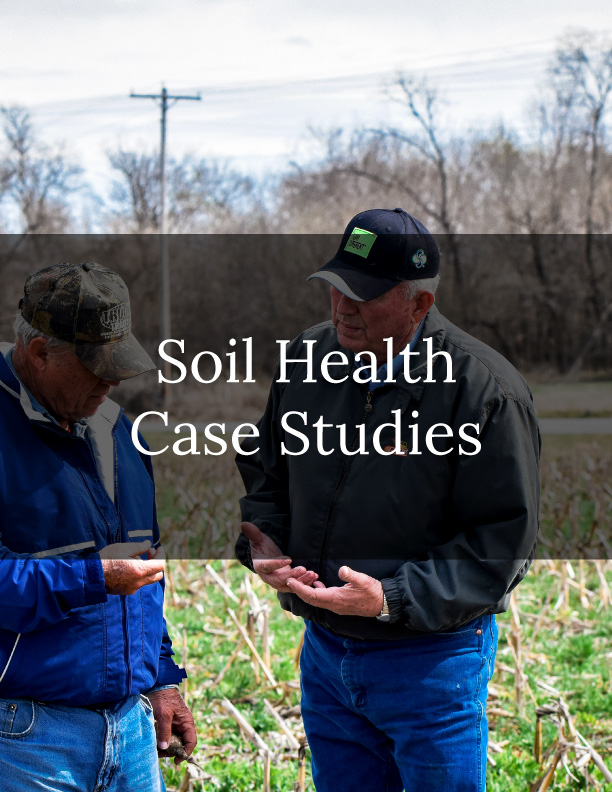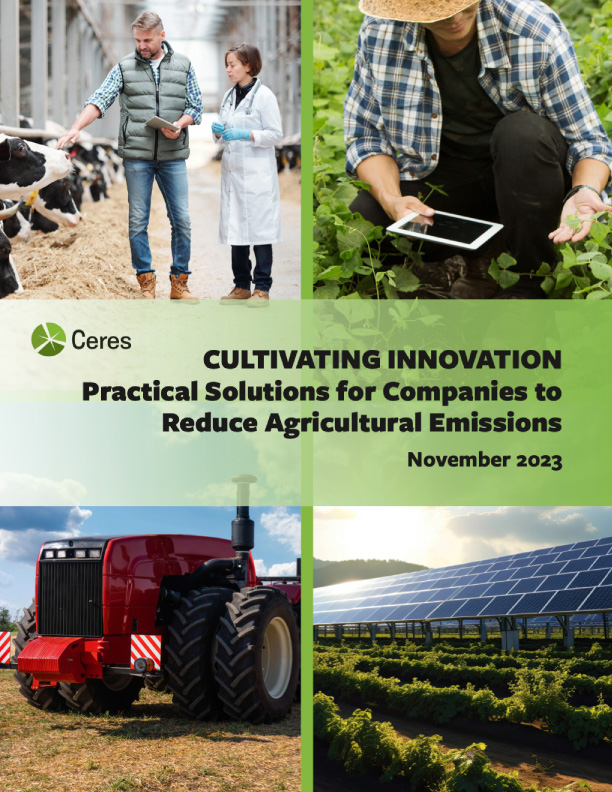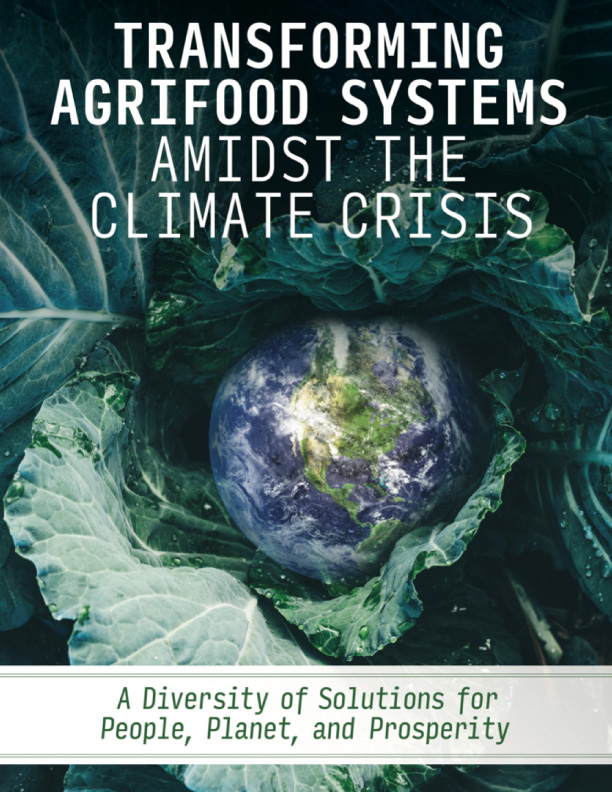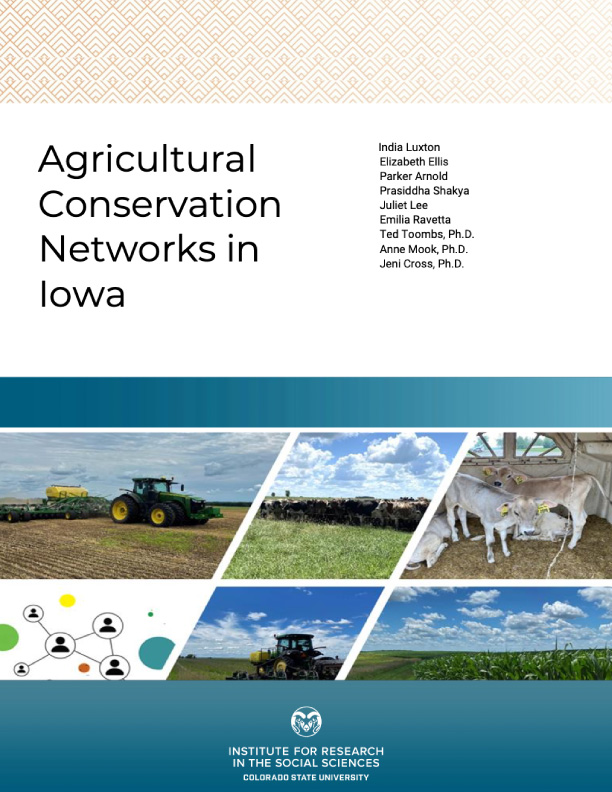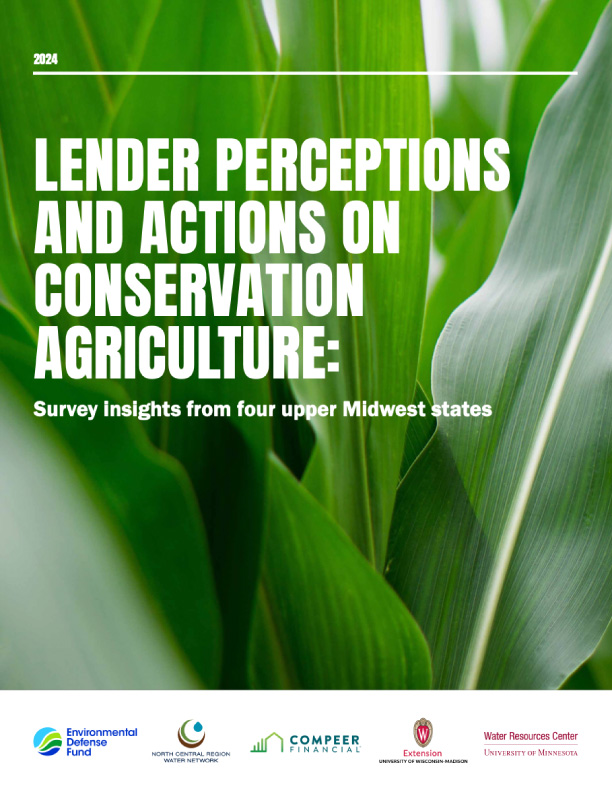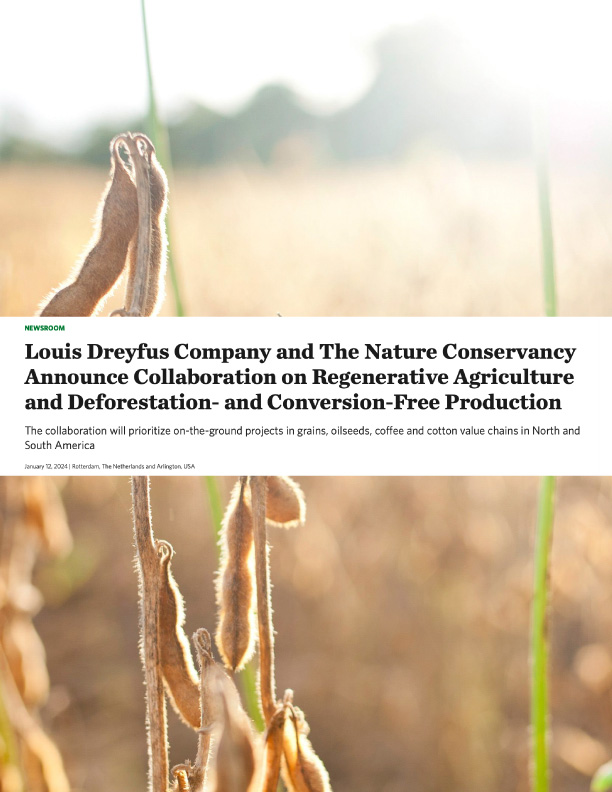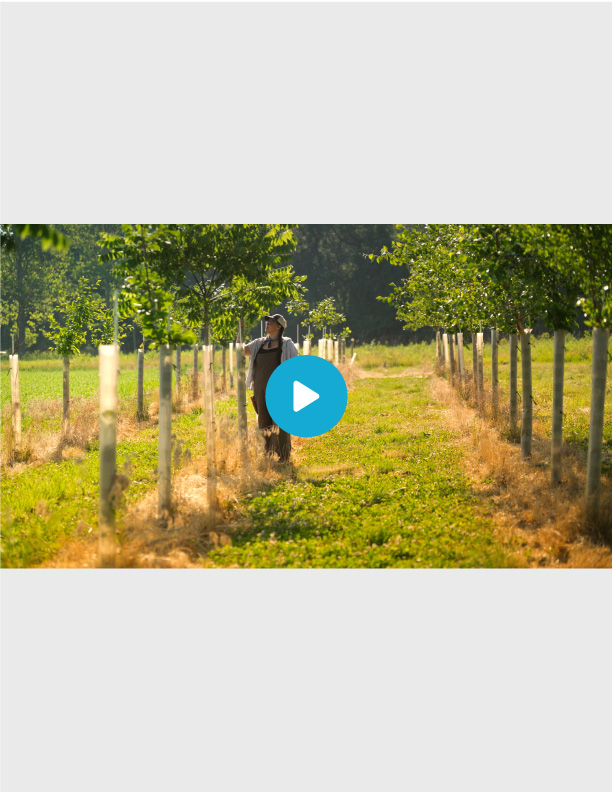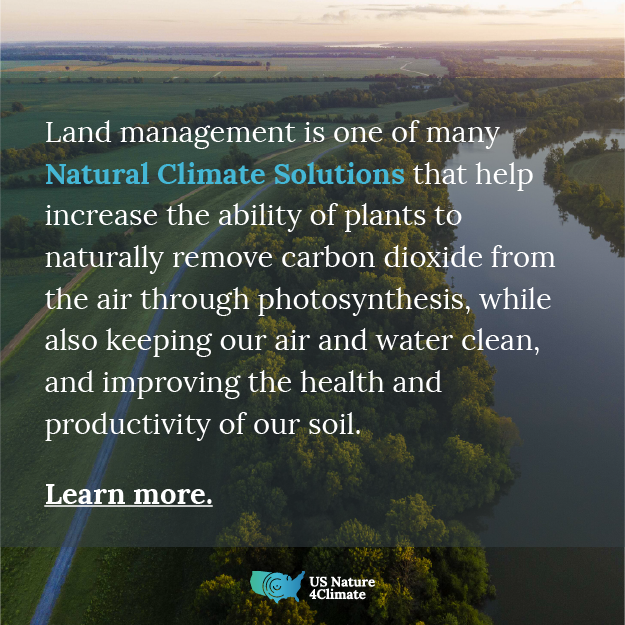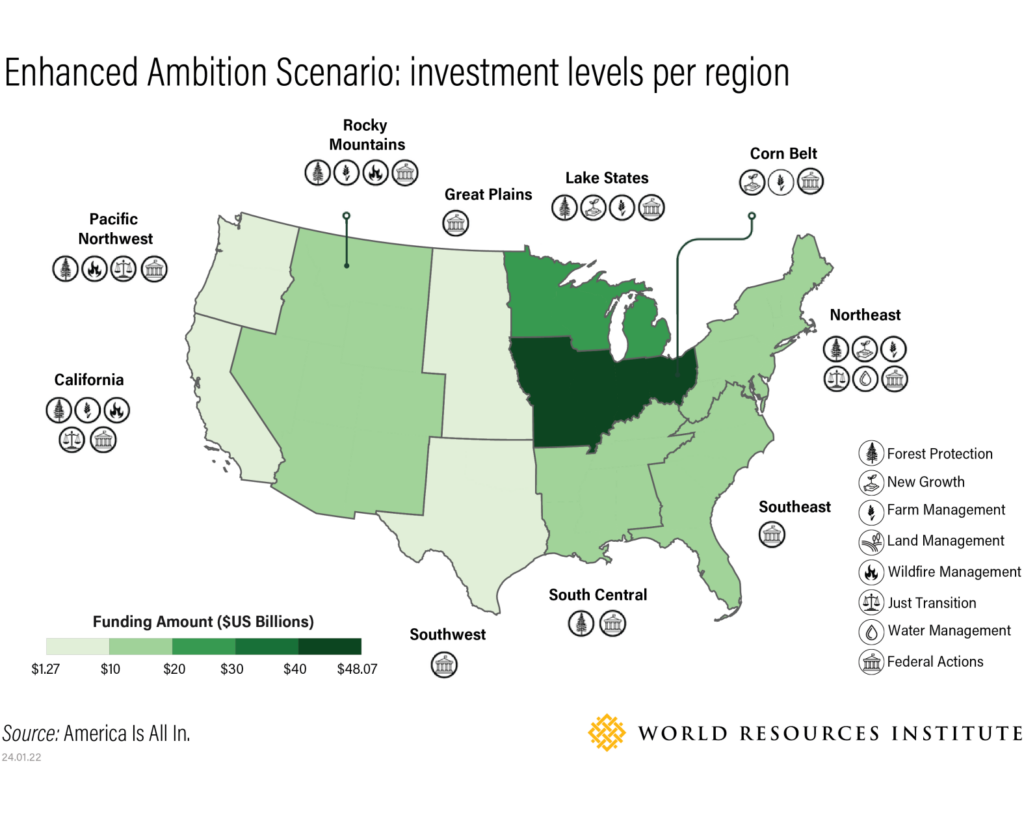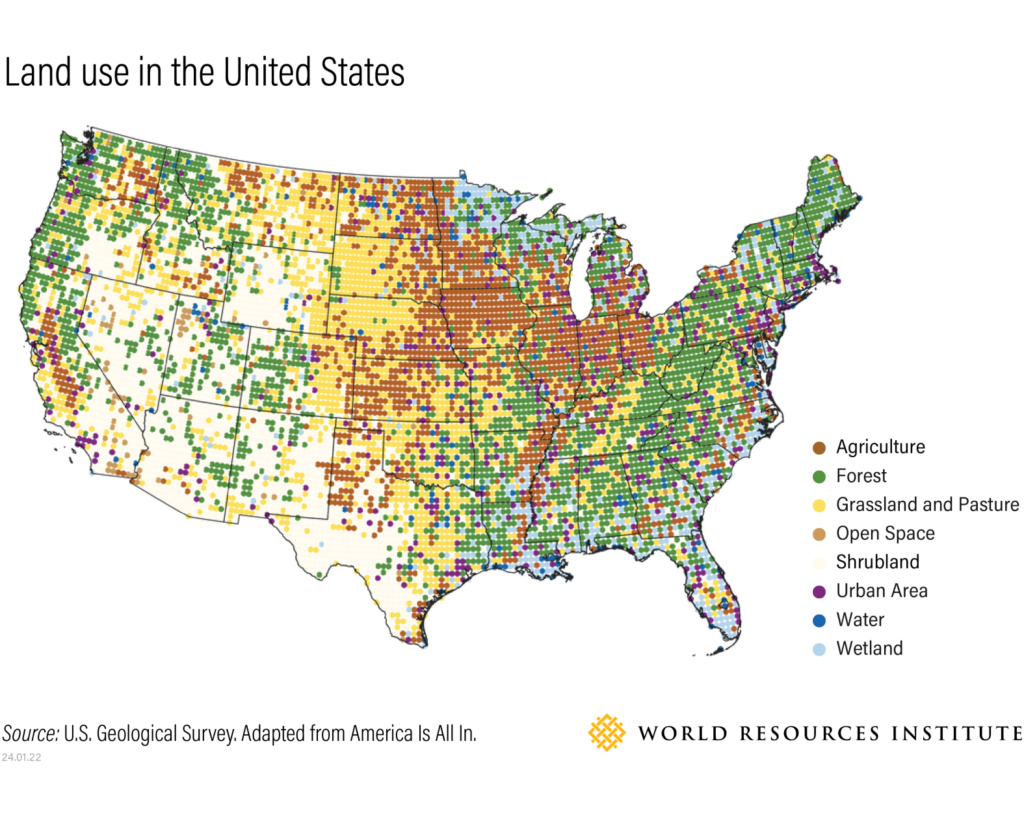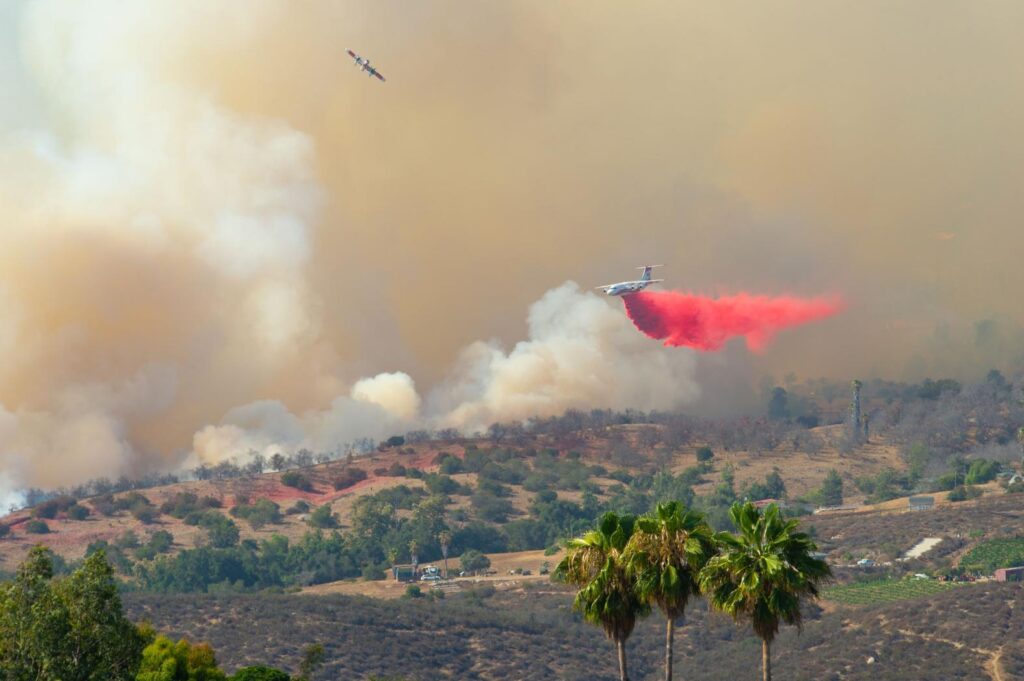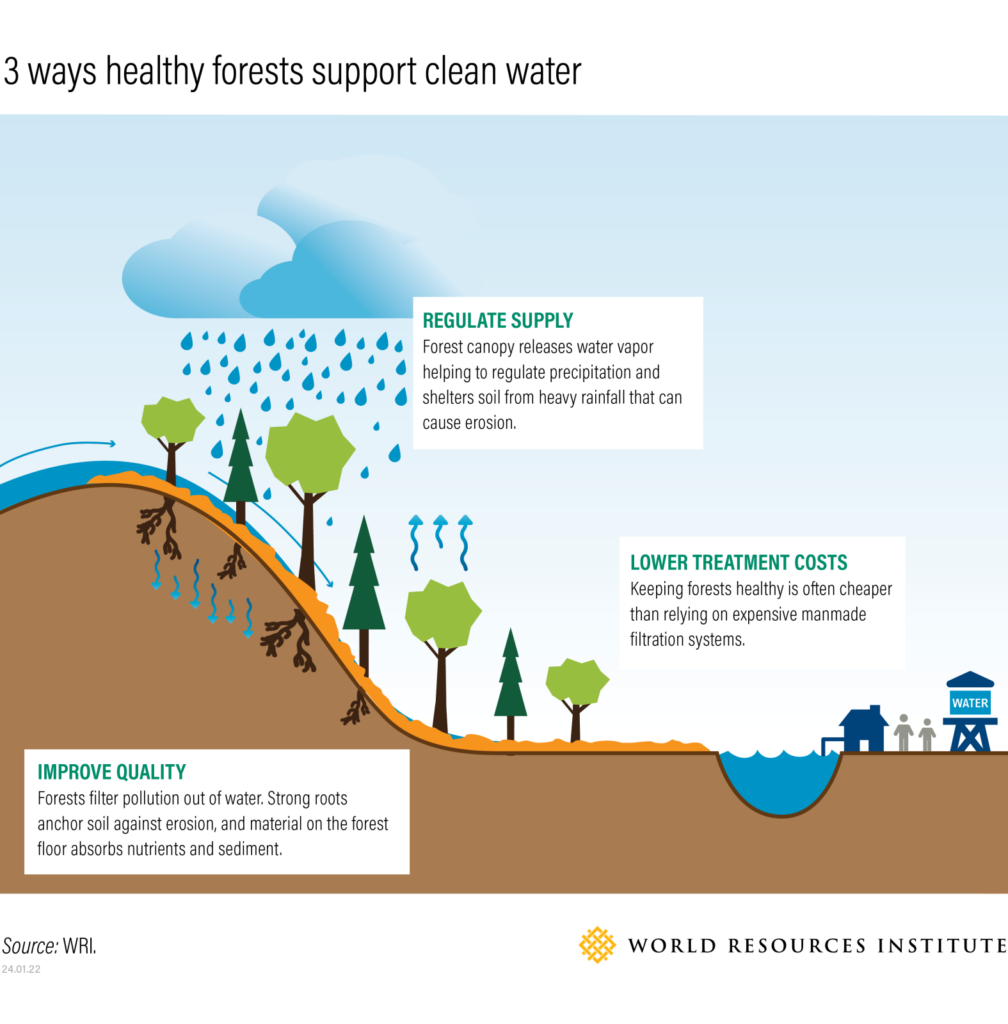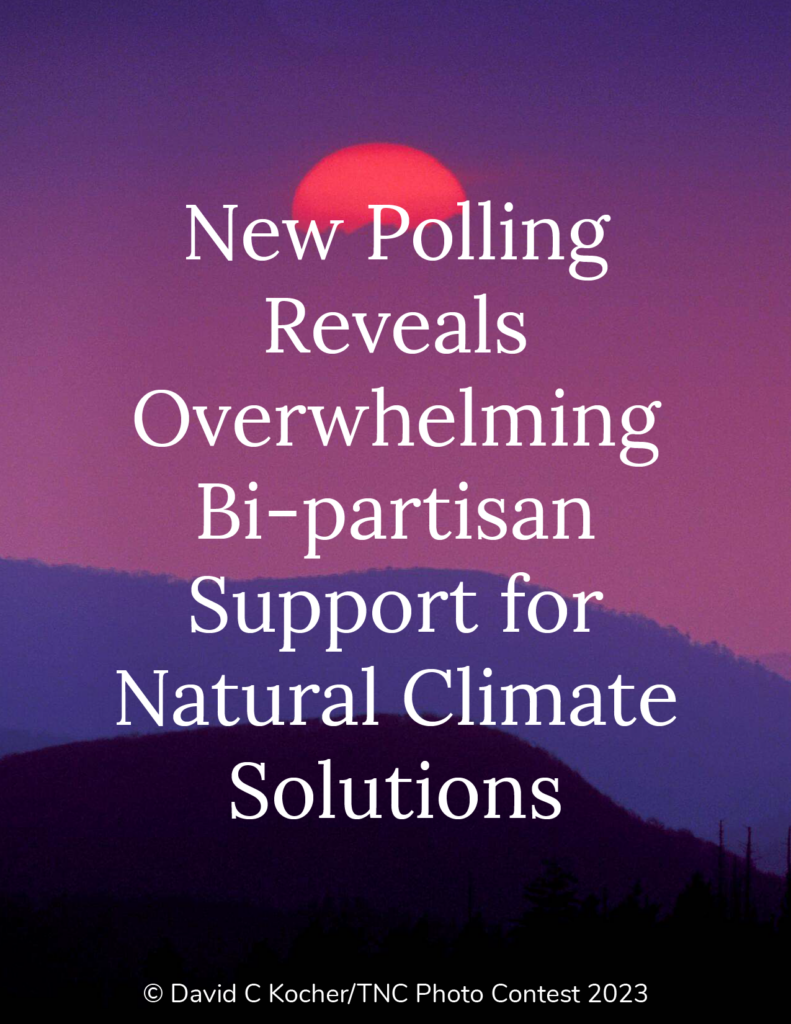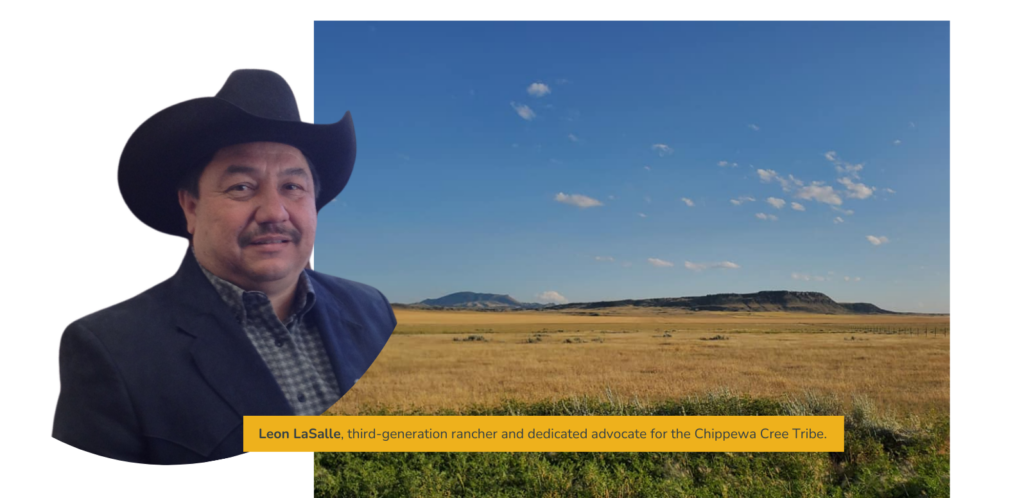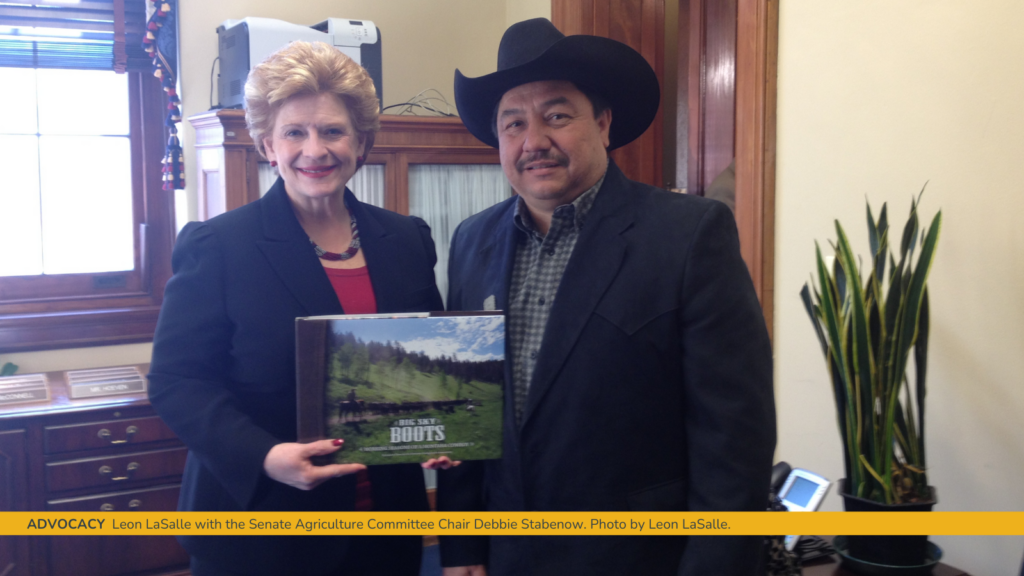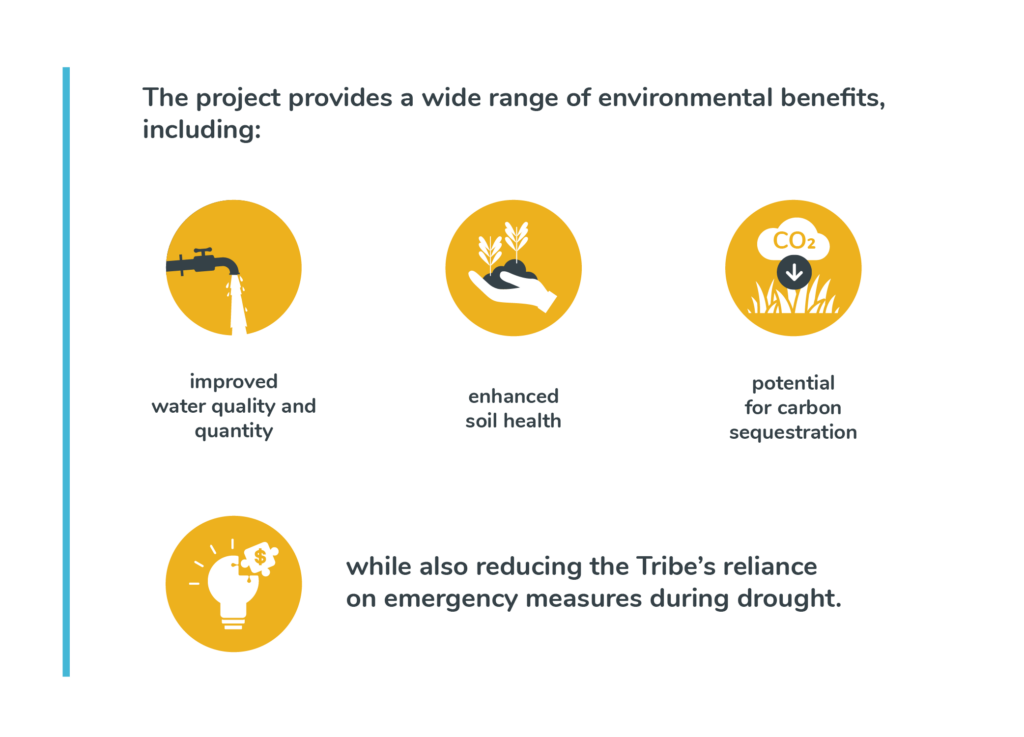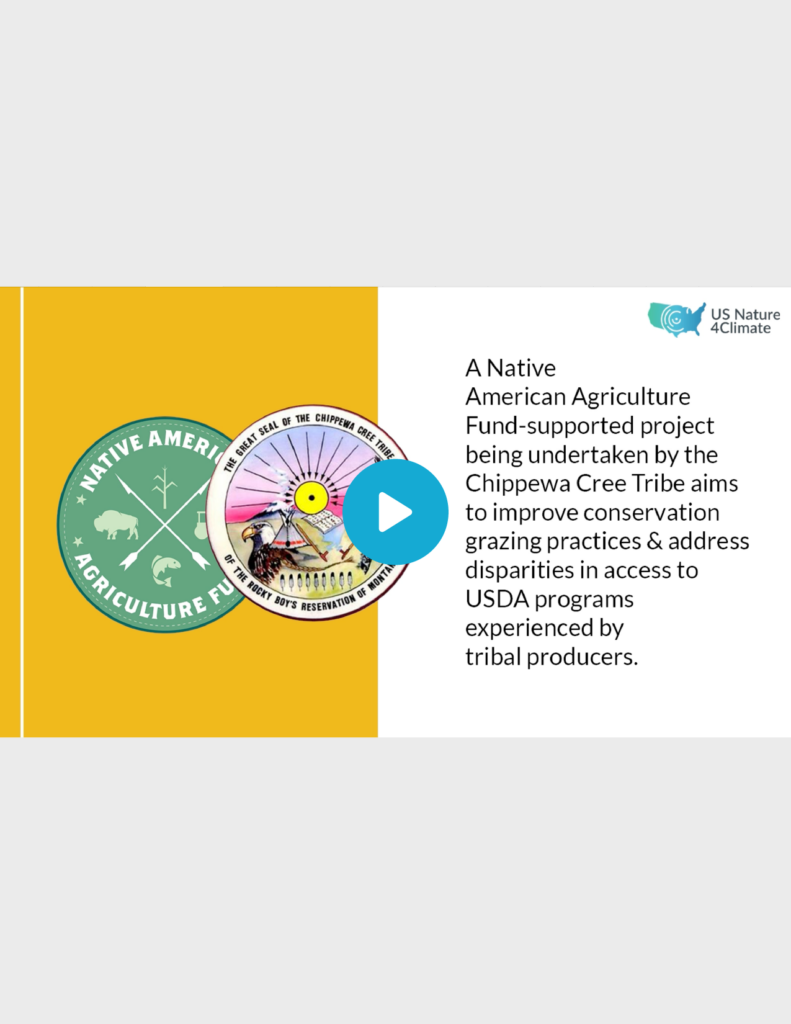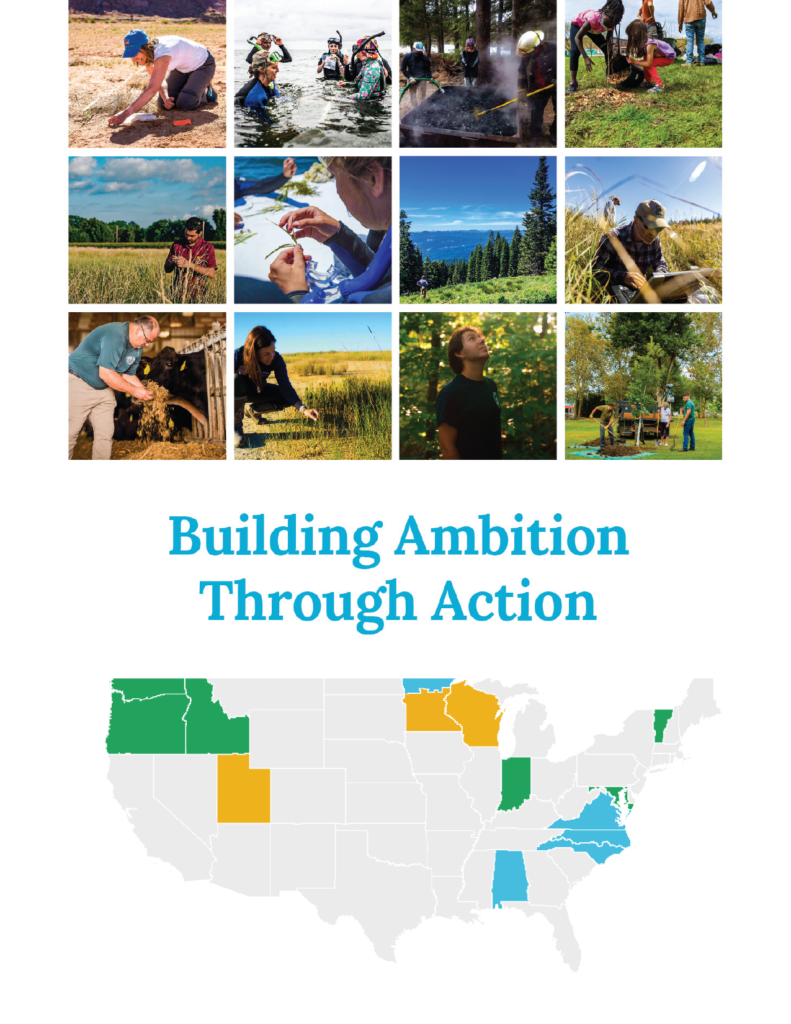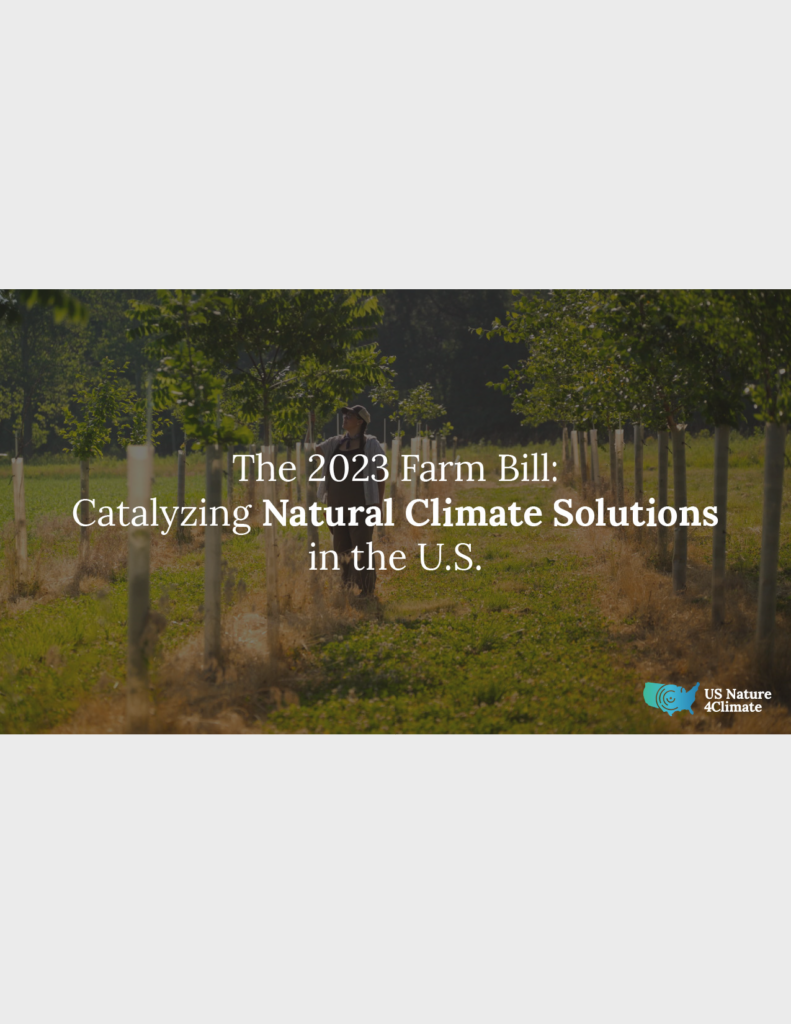New York Climate Week is just around the corner, and this year, Natural Climate Solutions (NCS) are taking center stage in critical discussions on climate action. From advancing forest restoration to corporate commitments on biodiversity and policy-driven solutions, a wide array of events will showcase how NCS can play a vital role in reducing emissions, protecting ecosystems, and enhancing resilience across the U.S. and beyond. Whether you’re a policymaker, business leader, or climate advocate, there’s something for everyone. Here’s a roundup of the key events focused on Natural Climate Solutions that you won’t want to miss, including panels, forums, and discussions featuring diverse voices from various sectors.
Table of Contents:
- Quick Reference Listing of Events (Sorted by Organization)
- Full Summary of USN4C Member Events (Sorted by Date)
Quick Reference Listing of Events (Sorted by Organization)
USN4C MEMBER EVENTS
U.S. Nature4Climate
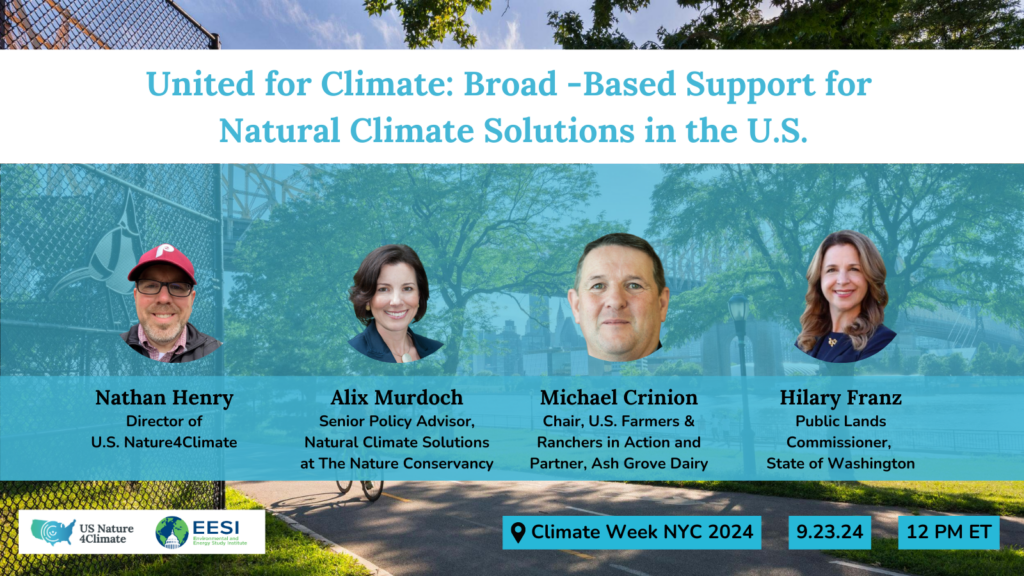
- BROAD-BASED SUPPORT FOR NATURAL CLIMATE SOLUTIONS: September 23 (12-1pm ET): Nature Hub – 101 Park Avenue (In-Person Only): United for Climate: Broad-Based Support for Natural Climate Solutions in the U.S.
1t.org US (cross-listed with Doris Duke Foundation)
- FOREST RESTORATION: September 25 (1-4pm ET) – with Doris Duke Foundation: Forest Restoration Leadership Forum.
- 1pm-2:15pm: Partnership Strategies for Effective & Accountable Restoration
- 2:30pm-3:45pm: Flipping the Switch for Forest Finance
Ceres (Full list of Ceres Climate Week Events)
- CORPORATE CLIMATE ACTION: September 25-26: Ceres at Climate Week.
- CORPORATE BIODIVERSITY ACTION: September 24 (3-4:30pm ET) – Nature Action 100: Ramping Up Private Sector Action to Meet Global Biodiversity Goals.
Doris Duke Foundation (cross-listed with 1t.org US and U.S. Climate Alliance)
- STATE NCS LEADERSHIP: September 24 (10:30-11:30am ET) – with U.S. Climate Alliance: Advancing State Leadership on Natural and Working Lands: A Discussion at Climate Week NYC.
- INDIGENOUS KNOWLEDGE AND CLIMATE ADAPTED FORESTRY: September 24 (1:30-2:30pm ET) – with Oregon State University School of Forestry, US Forest Service, and Cow Creek Band of Umpqua Tribe: Two-Eyed Seeing: A Green Solution for Climate Resilient Forests
- REFORESTATION: September 25 (1-4pm ET) – w/ 1t.org US: Forest Restoration Leadership Forum
- 1pm-2:15pm: Partnership Strategies for Effective & Accountable Restoration
- 2:30pm-3:45pm: Flipping the Switch for Forest Finance
Environmental Defense Fund
- AGRICULTURAL METHANE: September 25 (9am-1pm ET): Hybrid Public Event: From Ambition to Action: Solutions for Lower-Methane Livestock.
Pew Charitable Trusts:
- NETWORKING EVENT: September 23 (5:30-10pm ET): Public In-Person Event: Climate Night Live
The Nature Conservancy (Full list of The Nature Conservancy’s events at Climate Week)
- PUBLIC SUPPORT FOR NATURAL CLIMATE SOLUTIONS: September 25 (1-2pm) – The Polls Are In and It’s Nature for the Win.
- CARBON CREDITS: September 25 (10-11am ) – Carbon Credits Forward.
Trust for Public Land
- PARKS & EQUITY: September 23 (8am-9:30am ET): In-person event: Great Parks Should Not Uproot Communities
- PARKS & EQUITY: September 24 (8:30am ET): In-person event: Queens Way Walking Tour
- URBAN CLIMATE SOLUTIONS: September 25 (10am-12pm ET) – (cross-listed with WRI): In-person event: Ross Center Prize for Cities Learning Event.
- HEALTH & COMMUNITY BENEFITS OF PARKS: September 25 (1pm ET): Virtual event: Democracy Happens Outside: Leveraging Parks for Community Connection and Health Equity
- COMMUNITY SCHOOLYARDS: September 26 (11am ET): In-person event: Corlears Complex Community Schoolyard Opening
U.S. Climate Alliance (cross-listed with Doris Duke Foundation)
- STATE NCS LEADERSHIP: September 24 (10:30-11:30am ET) – with Doris Duke Foundation: Advancing State Leadership on Natural & Working Lands: A Discussion at Climate Week NYC.
U.S. Farmers & Ranchers in Action
- AGRICULTURAL NATURAL CLIMATE SOLUTIONS: September 24 (10am-12noon) — U.S. Farmers & Ranchers in Action: Webinar – Agriculture’s Potential to Become a Carbon Sink.
World Resources Institute
- FOOD SYSTEMS: September 23 (12-1pm ET): Fork in the Road: Navigating New Paths for Food Systems.
- CLIMATE, AI, & REMOTE SENSING: September 23 (3-4pm ET): Harnessing AI and Satellite Monitoring for a Nature-Positive Future.
- CORRECTED: FOOD SYSTEM CLIMATE EMISSIONS: September 23 (6-9pm ET): Networking Event — Progress No Matter What: Continued Climate Action in The States
- CORRECTED: CLIMATE ACTION IN THE U.S.: September 24 (4-6pm ET): Networking Event – Step Up Your Plate: A Mixer to Help the Food Industry Cut Emissions.
- AG & FOREST CLIMATE RESILIENCE: September 25 (8-10:30am ET) – Hybrid Event: Responding to Climate Disruption of Agriculture: Landscape Approaches for Resilient Farms and Forests
- URBAN CLIMATE SOLUTIONS: September 25 (10am-12pm ET) (cross-listed with Trust for Public Land): In-person event: Ross Center Prize for Cities Learning Event
EXTERNAL EVENTS OF INTEREST
Alive4Climate Alliance (TNC & EDF are participating organizations)
- LIVESTOCK & CLIMATE: September 25 (3:30-6:30pm): Hybrid event – Pastures of Plenty: Sustainable Livestock Solutions for Climate, Nature, and People
American Wood Council & WoodWorks
- MASS TIMBER: September 24 (5-8pm): In-Person Event – Building With Wood: Nature’s Climate Solution.
Change the Chamber: Lobby for Climate
- FARM BILL & CLIMATE: September 24 (6-7pm ET): Virtual Event: From Fields to Policy: Understanding the Farm Bill
- FARM BILL & ENVIRONMENTAL JUSTICE: September 25 (6-7pm ET): Virtual Event: From Fields to Policy: Farm Bill & Food Justice
Chloris Geospatial
- CARBON MARKETS & MONITORING: September 24 (7:30-9:30am ET): In-Person Event: New Forest Carbon Standards and Monitoring.
Columbia University
- ENVIRONMENTAL JUSTICE: September 22 (9am-6pm ET) and September 23 (5:30-9pm ET): In-Person Event: Climate Justice Summit: People Deliver
Cool Effect
- FOREST CLIMATE PROJECTS: September 26 (6-9pm) – with Conservation International: In-person event – Food, Festivities, & a Fireside Chat. A Photographic Journey through Forestry Carbon Projects
Environmental Protection Agency
- U.S. FEDERAL CLIMATE INVESTMENTS: September 24 (1:30-3pm ET): Hybrid Event: Investing in America for the Climate: Unprecedented EPA Investments Change Lives Across the Country.
Foundation for California Community Colleges
- CLIMATE WORKFORCE: September 25 (10-11:30am): In-person Event: Community Colleges: Keys to Climate Workforce and Adaptation
Futerra
- CLIMATE CHANGE COMMUNICATION: September 23-25 (multi-day event): Hybrid Event: Solutions House 2024
Guarini Center on Environmental, Energy, and Land Use Law
- CLIMATE CHANGE & COURT ACTION: September 24 (9am ET): Public in-Person Event: Climate Change and the Courts.
Harvard University Salata Institute for Climate and Sustainability
- AGRICULTURAL METHANE: September 24 (3-3:45pm): In-person event – Harvard Presents: Rising Methane: Opportunities for U.S. Action.
International Sustainable Forestry Coalition
- LAND MANAGEMENT & NATURE: September 25 (9:30-11:55am): In-person event – It’s Time to Unleash Nature Positive, Climate Positive Bioeconomy Solutions
Mass Timber@MSU & Colorado Mass Timber Coalition
- MASS TIMBER: September 24 (1-3pm): Hybrid event – Timber Matters: Regional Approaches to Sustainable Mass Timber Ecosystems
National Forest Foundation
- NATURAL CLIMATE SOLUTIONS INNOVATION: September 23 (6:30-9pm ET): In-person event – Nature Unleashed: Delivering for People, Planet, and the Bottom Line
Nespresso
- REGENERATIVE AGRICULTURE: September 26 (9:30-11am ET): In-person event – Regenerative Agriculture, Product Supply Chains, and the Role of Biodiversity in Climate
New York Center for Ethical Culture
- POLITICAL CLIMATE COMMUNICATIONS: September 25 (7-9:30pm ET): In-person event – The Language of Climate Politics in the 2024 Election
Protect Our Winters
- OUTDOOR INDUSTRY & CLIMATE ACTION: September 26 (7-9pm ET): In-person event – Outdoor Recreation & Climate Advocacy: A Conversation About the Intersection of Sport & Individual Action
Redwood Climate Communications
- CLIMATE COMMUNICATIONS: September 23 (2-3pm ET): Virtual event – Climate Communications Beyond the Ballot.
Wildlife Conservation Society
- CONSERVATION & CLIMATE ACTION: September 24 (10am-12pm ET): In-Person Event: Are Wild Animals the Unsung Heroes of Climate Action?.
Woodwell Climate Research Center
- ARCTIC CLIMATE IMPACTS: September 23 (6:30pm ET): In-person event – Beyond the Ice: The Worldwide Impacts of Arctic Extremes
- INDIGENOUS CLIMATE ACTION: September 24 (10am-12pm ET: In-person event – Climate Optimism: A Roundtable Vision for Planetary Health
- NETWORKING EVENT: September 25 (6-8pm ET): Networking event – Woodwell Climate Social
World Wildlife Fund/America Is All In (Visit here for the full listing of America Is All In Events – Register for a NEST pass to attend all events)
- GRASSLANDS: September 24 (8-9am ET): In-person event – TThe Importance of Saving Grasslands to Combat Climate Change
- STATE CLIMATE ACTION: September 24 (9-9:30am ET): In-person event – Leadership in Action: Insights from a Climate Champion
- CLIMATE DISCLOSURE REGULATIONS IN THE U.S.: September 24 (5-6pm ET): In-person event – The Future of Nature and Climate-Related Disclosure in the U.S.
- US CLIMATE ACTION: September 25 (10am-12pm ET): In-person event: America is All In Experts Hub
- SCIENCE-BASED TARGETS & CARBON MARKETS: September 25 (11am-12pm): In-person event – Are Science-Based Targets Compatible with Market-Based Solutions?
- COASTAL CLIMATE RESILIENCE: September 25 (1:30-2pm): In-person event – Building a Climate Ready Nation
- US CLIMATE ACTION: September 25 (2-2:45pm): In-person event – Leading Local Climate Action: U.S. Success Stories
U.S. CLIMATE ACTION
- September 25 (3-3:30pm): In-person event – All In for 2035: A Roadmap for Ambitious Climate Action in the U.S.
Full Summary – U.S. Nature4Climate Coalition Events (Sorted by Date)
Monday, September 23, 2024
Trust for Public Land
- PARKS & EQUITY: September 23 (8am-9:30am ET): In-person event: Great Parks Should Not Uproot Communities. TPL New York Office, 632 Broadway, Suite 902. Join TPL & NYC Parks Commissioner Sue Donoghue for coffee and to explore Trust for Public Land’s latest research findings on green gentrification—the influx of more affluent residents and capital into underserved communities due to new green spaces—and the risk of displacement that can follow. The event will delve into TPL’s new green paper, Great Parks Should Not Uproot Communities: Green Gentrification Risk Factors & Anti-Displacement Options. Speakers include Sue Donoghue, Commissioner of the NYC Department of Parks & Recreation and Linda Hwang, TPL’s Senior Director of Strategy & Innovation. RSVP here.
U.S. Nature4Climate

- BROAD-BASED SUPPORT FOR NATURAL CLIMATE SOLUTIONS: September 23 (12-1pm ET): Nature Hub – 101 Park Avenue (In-Person Only): United for Climate: Broad-Based Support for Natural Climate Solutions in the U.S.: During this event, sponsored by U.S. Nature4Climate (USN4C) and the Environmental & Energy Study Institute (EESI), USN4C staff will present the results of recent polling highlighting broad support for NCS, revealing that Americans overwhelmingly favor a broad array of policies and practices that can be utilized to implement these strategies, and providing research-informed messaging recommendations for NCS advocates. Then, a diverse panel will demonstrate the broad support for strategies that can scale up NCS implementation from a variety of different perspectives – each invited to detail how a specific strategy can help the U.S. meet its climate goals, why NCS has broad support among their constituency, and what can be done to help scale up implementation. The event will wrap with a Q&A for the expert panel. Register here. Note that the event is at capacity, but registering will ensure that you receive links to the event recording and our post-event write-up.
Moderator
- Daniel Bresette, President, Environmental & Energy Study Institute
Speakers:
- Nathan Henry, Director, U.S. Nature4Climate
- Alix Murdoch, Senior Policy Advisor, The Nature Conservancy
- Michael Crinion, Chair, U.S. Farmers & Ranchers in Action and Partner, Ash Grove Dairy
- Hilary Franz, Public Lands Commissioner, State of Washington
World Resources Institute
- FOOD SYSTEMS: September 23 (12-1pm ET): Fork in the Road: Navigating New Paths for Food Systems. Nature Hub, 101 Park Avenue. Improving food production. Reducing food loss and waste. Consuming healthy and sustainable diets. Feeding the world’s population and creating a sustainable food future for all will require significant shifts in the way we produce and consume food. We know that food-related emissions alone are projected to exceed targets to limit warming to 1.5°C without changes to the current global food system. Transforming food and agriculture will involve a combination of supply- and demand-side shifts to equitably and nutritiously feed 10 billion people on fewer hectares of land, with fewer GHG emissions, and without harming biodiversity. Experts will discuss how companies, NGOs, and investors can work together to break down silos and develop food and agricultural solutions within and across sectors. Such cross-cutting shifts must address both production and consumption, climate and biodiversity impacts, health and equity concerns, and beyond. Co-hosted by the Bezos Earth Fund and World Resources Institute, this conversation will be informed by forthcoming insights from Systems Change Lab on the shifts needed to transform food and agriculture. Join waitlist here.
- CLIMATE, AI, & REMOTE SENSING: September 23 (3-4pm ET): Harnessing AI and Satellite Monitoring for a Nature-Positive Future. Nature Hub (Chrysler Forum), 101 Park Avenue. New breakthroughs in artificial intelligence and satellite monitoring are transforming the way we understand, and protect, the world around us. In this series of rapid-fire talks, you’ll hear from some of the world’s leading AI, geospatial monitoring and conservation experts, as they discuss the future of geospatial monitoring and cutting-edge innovations paving the way for a nature-positive economy. Hear how the Bezos Earth Fund is bringing together innovators across climate, nature, and AI to create solutions that will deliver a healthier planet for all. Learn how organizations like Google and Meta are partnering with WRI and Land & Carbon Lab to develop groundbreaking new AI powered data and tools that will provide unprecedented transparency about what’s happening to the world’s land and nature-based carbon anywhere on the planet, at any time. Plus, learn how you can use this information to achieve ambitious net zero and sustainability targets. Join waitlist here.
Pew Charitable Trusts
- NETWORKING EVENT: September 23 (5:30-10pm ET): Public In-Person Event: Climate Night Live (with Canary Media). 44 Charlton Street. On stage: Talk-show style programming co-hosted by Canary journalists with top clean energy experts, policymakers, advocates, and philanthropic leaders. Expect engaging discussions, musical performances, and interactive segments showcasing climate solutions. Confirmed guests: John Kerry, 68th U.S. Secretary of State; Alex Honnold, founder at the Honnold Foundation and professional adventure rock climber; Dana Clare Redden, founder at Solar Stewards Nicole Kelner, founder at Arts and Climate Change; Tom Dillon, senior vice president, head of environment at The Pew Charitable Trusts; Ben Wolkon of MUUS Climate Partners and his band. Off stage: The event will kick off with a reception starting at 5:30 p.m., and there will be plenty of time for drinks, hors d’oeuvres, and socializing. This is an invite-only event with limited space. Please click on the ‘Get Tickets’ button to put your name on the waitlist for an opportunity to attend if space opens up. The event will also be livestreamed on Canary Media’s YouTube. Click here to join waitlist.
World Resources Institute
- CORRECTED:CLIMATE ACTION IN THE U.S.: September 23 (6-9pm ET): Networking Event — Progress No Matter What: Continued Climate Action in The States. Loreley Beer Garden, 7 Rivington St. Please join Climate Cabinet, Data for Progress, Evergreen Collaborative, the National Caucus of Environmental Legislators, and World Resources Institute for a happy hour featuring state and local leaders alongside partners across the climate movement for a discussion on how to advance bold state action. After four years of historic climate progress under the Biden-Harris administration, states have more tools than ever before to act on climate and deliver for communities. As we look ahead to the next phase of climate action, come hear how states are poised to innovate, accelerate, and continue delivering on climate for the next 40 years and beyond. Register here — limited space.
Tuesday, September 24, 2024
Trust for Public Land
- PARKS & EQUITY: September 24 (8:30am ET): In-person event: Climate Week Queens Way Walking Tour. Meet at Stop & Shop, 8989 Union Turnpike, Queens. This tour will highlight the transformative power of reimagining underutilized urban spaces to address the outdoor equity gap for a greener future. Immersed in the dynamic neighborhood of Queens, you’ll explore our ongoing efforts to convert an abandoned LIRR line into a thriving 47-acre park and cultural greenway. We’ll discuss how projects like this are vital to achieving a sustainable and low-carbon future, while also enhancing community connectivity and green space accessibility. RSVP here.
U.S. Farmers & Ranchers in Action:
- AGRICULTURAL NATURAL CLIMATE SOLUTIONS: September 24 (10am-12noon) — U.S. Farmers & Ranchers in Action: Webinar – Agriculture’s Potential to Become a Carbon Sink. This event will highlight agriculture’s crucial role in reducing greenhouse gas emissions. Speakers will include farmers and scientists who will share real world experience and explore the scientific principles underlying farming practices and progress being made in reducing GHG emissions. Speakers include Marilyn Hershey, Farmer & Chair, Dairy Management, Inc.; Dr. Chuck Rice, Kansas State University, Doug Berven, VP of Corporate Affairs, POET; Dr. Hanna Birge, Senior Scientist, Food & Water, The Nature Conservancy, and Dr. Marty Matlock, University of Arkansas. Register here.
Wildlife Conservation Society
- CONSERVATION & CLIMATE ACTION: September 24 (10am-12pm ET): In-Person Event: Are Wild Animals the Unsung Heroes of Climate Action?. New York Times Building, 620 8th Avenue Offices of Seyfarth Shaw, LLC, #33, Floor 1. Animals are often ignored in climate action plans, but recent evidence shows that some wild animal species play a massive role in natural carbon sequestration. From whales and sharks to elephants and wolves, beavers and sea otters, iconic species from around the world are the unsung heroes of climate action – acting as carbon cycle engineers who can supercharge the effectiveness of natural climate solutions. But we need the money, policies and projects to make this happen. How are conservation agencies making their operations climate sensitive, so they can deliver benefits for nature, climate, and people? How can finance providers step up to invest in wildlife conservation as a long-term, large-scale climate solution?
Panelists include ecologist Matteo Rizzuto; Monica Medina, Senior Fellow, Conservation International and former U.S. Assistant Secretary of State for Oceans and the Environment; Vance Martin, President Emeritus, Wilderness Foundation Global; Jimmiel Mandima; VP of Global Programs at IFAW; Julie McCarthy, Co-CEO of NatureFinance; Diana Denke, Co-Founder and CEO, Fair Carbon; and Paula Francisco Coelho, Secretary of State for Climate Action and Sustainable Development, Republic of Angola. Register here.
U.S. Climate Alliance & Doris Duke Foundation
- STATE NCS LEADERSHIP: September 24 (10:30-11:30am ET) – with Doris Duke Foundation & JM Kaplan Fund: Advancing State Leadership on Natural and Working Lands: A Discussion at Climate Week NYC. Convene Chrysler Forum, 101 Park Avenue. States are leading the charge to harness America’s natural and working lands to achieve our climate goals and secure a clean and resilient net-zero future. In communities throughout the country, natural and working lands like farms, forests, wetlands, and coastal areas are providing critical climate benefits – such as sequestering carbon, mitigating floods, and reducing urban heat. At this session, top state officials from across the U.S. Climate Alliance will highlight how governors are advancing next-generation policies on natural and working lands, leveraging historic federal funding to accelerate action, and building resilient communities and ecosystems. Register here.
Doris Duke Foundation
- INDIGENOUS KNOWLEDGE AND CLIMATE ADAPTED FORESTRY: September 24 (1:30-2:30pm ET) – with Oregon State University School of Forestry, US Forest Service, and Cow Creek Band of Umpqua Tribe: Two-Eyed Seeing: A Green Solution for Climate Resilient Forests
Ceres
- CORPORATE BIODIVERSITY ACTION: September 24 (3-4:30pm ET) – Nature Action 100: Ramping Up Private Sector Action to Meet Global Biodiversity Goals. In the run-up to COP16, Nature Action 100 is co-hosting an event at Climate Week New York City 2024 to discuss the crucial role of the private sector in achieving global nature action goals. This invite-only event will highlight how Nature Action 100, an investor-led engagement initiative, supports companies in meeting these goals through catalyzing action on nature and biodiversity loss. Participants will hear from Nature Action 100 investors and experts who will dive into important and timely topics. The event will conclude with a networking reception. This event is invitation only, but Ceres provides a link for requesting an invitation to the event.
World Resources Institute
- FOOD SYSTEM CLIMATE EMISSIONS: September 24 (4-6pm ET): Networking Event — Step Up Your Plate: A Mixer to Help the Food Industry Cut Emissions.. Pier Sixty, 60 Chelsea Pier. Join us on September 24th, from 4-6pm at Pier 60, as industry experts discuss real-world solutions to reduce the food and beverage industry’s emissions using delicious, research-backed strategies. Speakers include leaders from the New York City Mayor’s Office of Food Policy, Aramark, World Resources Institute, US Tennis Association, and more! Panelists will discuss how to operationalize behavior change strategies in food-service settings, and offer perspectives from the journey of tackling food-related emissions. Guests will also hear insights from WRI’s new “Food Service Playbook for Promoting Sustainable Food Choices,” which features 90 techniques to sell more plant-rich menu items. Programming will be followed by a round of structured speed networking.
Drinks and bites will be served. This event is brought to you by Coolfood, an initiative of WRI. It’s co-hosted by the NYC Mayor’s Office of Food Policy’s Plant-Powered Carbon Challenge and The Sustainable Restaurant Association, with speakers from Aramark, US Tennis Association, and WRI. Registration required – register here.
Wednesday, September 25, 2024
World Resources Institute
- AG & FOREST CLIMATE RESILIENCE: September 25 (8-10:30am ET) – Hybrid Event: Responding to Climate Disruption of Agriculture: Landscape Approaches for Resilient Farms and Forests (with IDH) and the Forest Positive Coalition of the Consumer Goods Forum). Harvard Club, 35 W. 44th St. Forest protection and regeneration can mitigate global climate change and stabilize supply, as agricultural production flourishes in a healthy and thriving local ecosystem. Savvy food value chain decision-makers are investing early in testing resilient production models at landscape level so that they can be scaled to bigger sourcing areas, end deforestation and reduce supply and business risks. This unique event hosted by IDH, the Forest Positive Coalition of the Consumer Goods Forum and the World Resources Institute will dive into solutions to supply risks in key tropical commodities -palm oil, beef, cocoa and coffee, and explore how landscape-level action can protect and regenerate forests, and support climate-friendly production of these commodities. Panelists include: Emily Kunen, Senior Director, Agriculture and Forests, PepsiCo; Kevin Rabinovitch, Chief Climate Officer, Mars; Wanjora Mathai, Africa Director, WRI. Moderator: Anna Bressanin, Senior Editor, BBC. Register here.
Environmental Defense Fund
(Full list of EDF events can be found here)
- AGRICULTURAL METHANE: September 25 (9am-1pm ET): Hybrid Public Event: From Ambition to Action: Solutions for Lower-Methane Livestock. Environmental Defense Fund (EDF), in partnership with Cornell University, will be hosting a special half-day event at New York Climate Week this year titled “Climate Solutions for Sustainable Livestock.” This event will bring together innovators, scientists, and policymakers to discuss solutions for further reducing methane emissions from animal agriculture, focusing on the need for collaborative research and innovation across the agriculture sector, effective policy levers for supporting implementation at the farm level, and elevating animal health as a pathway for securing a triple win for farmers, food security, and the climate. Register here (note registration link currently goes to EDF website).
The Nature Conservancy
(Full list of The Nature Conservancy’s events at Climate Week)
- CARBON CREDITS: September 25 (10-11am ) – Carbon Credits Forward. Nest Climate Campus. 425 11th Avenue.Although progress has been made, the world is still not on track to reach net zero by 2050 which is essential for meeting global climate goals. Surpassing 1.5°C of global warming implies dangerous and widespread impacts on earth. We are currently on track for 2.7°C. Time is no longer a luxury the world has to close this climate ambition gap. The reality is clear: we need all hands on deck to use every ready, proven and scalable tool now. In this session, NGOs, private sector, scientists, and carbon leaders come together to discuss how to create a VCM purpose designed for the global net zero movement and how innovation in finance, science and collaboration can help us build up the mechanisms that will help the world achieve our shared climate goals. Register here.
Trust for Public Land & World Resources Institute
- URBAN CLIMATE SOLUTIONS: September 25 (10am-12pm ET): In-person event: Ross Center Prize for Cities Learning Event. Apella, 450 E. 29th Street. The World Resources Institute will be holding a Q&A discussion with its 2024 Ross Cities Prize finalists. These finalists—which consist of initiatives from cities around the world—have been nominated for their impact in accelerating the urban sustainable transition. In this learning event, the finalist groups will share lessons and insights from their projects with the public. This free public event offers a rare chance to hear directly from the visionary leaders behind these initiatives. The 5 finalists — chosen from hundreds of global submissions—represent diverse approaches to urban sustainability. Among the finalists is Trust for Public Land’s Green Community Schoolyards program. Register here.
The Nature Conservancy
- PUBLIC SUPPORT FOR NATURAL CLIMATE SOLUTIONS: September 25 (1-2pm) – The Polls Are In and It’s Nature for the Win. Nest Climate Campus. 425 11th Avenue. The science is clear that we can’t meet our climate goals without nature—but where does the voting public stand on natural climate solutions? Recent national surveys about natural climate solutions in Brazil, Canada and the U.S. led by TNC provide important lessons for policymakers about broad public support for NCS in three unique geographies and political and economic scenarios. The event will cover how to talk about the benefits of NCS in a way that resonates for people across the ideological spectrum; which pathways and outcomes are most salient for local communities; how to build support among the most skeptical audiences, and more, based on results of the most recent USN4C U.S. poll (July 2024), a Nature United poll (June 2024) and Brazil poll (August 2024). Register here. Note that this event will feature a discussion of USN4C’s 2024 national survey.
Trust for Public Land
- HEALTH & COMMUNITY BENEFITS OF PARKS: September 25 (1pm ET): Virtual event: Democracy Happens Outside: Leveraging Parks for Community Connection and Health Equity. We all know parks are great for our bodies and minds, but they also have the power to strengthen social bonds and unite communities at a time when toxic polarization and distrust are fraying the country’s social fabric. Join Trust for Public Land and our community partners as we reveal how activating a park generated a movement with long-ranging impacts on community power and health equity. We will dive into the academic research around social capital, cohesion, and civic engagement through park engagement, and explore questions together such as: How can partnerships with the health sector improve community parks and strengthen democracy? and What’s the role of philanthropy in supporting park equity and community power? RSVP here.
1t.org US & Doris Duke Foundation
- FOREST RESTORATION: September 25 (1-4pm ET) – with Doris Duke Foundation: Forest Restoration Leadership Forum. Doris Duke Foundation, 444 Madison Avenue, 10th Floor. For the second year during Climate Week NYC, we have partnered with the Doris Duke Foundation to convene leaders across sectors to advance transformative action in forest restoration. In response to climate change, biodiversity loss, and ecosystem degradation, this forum fosters innovative solutions, strategic partnerships, and collective action needed to restore and sustain resilient forests. Register here. There will be two public events during the Leadership Forum:
- 1pm-2:15pm: Partnership Strategies for Effective & Accountable Restoration: Salesforce will share key findings from an independent evaluation of its global tree projects, offering best practices for private-sector partnerships in forest restoration, followed by a fireside chat with companies and their implementation partners on building successful collaborations. During this panel, Salesforce will share key findings from the evaluation, including best practices that can be replicated by other private sector entities looking to contribute to forest conservation and restoration. We’ll discuss the challenges of tree planting, the importance of resilience and community involvement, and the benefits of a landscape approach to reforestation. The session will conclude with a fireside chat between companies investing in restoration projects and their implementation partners on the elements that have made their partnerships successful.
- 2:30pm-3:45pm: Flipping the Switch for Forest Finance: As the UN Decade for Ecosystem Restoration reaches its halfway point, it’s clear that we need to accelerate action with increased private sector investment, innovative public-private partnerships, and new policy advancements to protect biodiversity and mitigate climate change. With growing recognition of our dependencies on nature as an economy, we need to properly value the ecosystem services provided by nature by mainstreaming nature through every step of decision-making for federal economic policy, philanthropic strategies and investments, and private sector business strategies. Questions to be addressed include: How can businesses be forest forward? What policy levers can we pull to advance nature in business? What government policies are needed to create a robust enabling environment for nature and forests (e.g. natural capital accounting framework)? What role can philanthropy play in creating the enabling environment for nature and forests? How can opportunities be identified for private-public sector partnerships to leverage forests as a NbS at home or abroad?
- 1pm-2:15pm: Partnership Strategies for Effective & Accountable Restoration: Salesforce will share key findings from an independent evaluation of its global tree projects, offering best practices for private-sector partnerships in forest restoration, followed by a fireside chat with companies and their implementation partners on building successful collaborations. During this panel, Salesforce will share key findings from the evaluation, including best practices that can be replicated by other private sector entities looking to contribute to forest conservation and restoration. We’ll discuss the challenges of tree planting, the importance of resilience and community involvement, and the benefits of a landscape approach to reforestation. The session will conclude with a fireside chat between companies investing in restoration projects and their implementation partners on the elements that have made their partnerships successful.
Thursday, September 26, 2024
Trust for Public Land
- COMMUNITY SCHOOLYARDS: September 26 (11am ET): In-person event: Corlears Complex Community Schoolyard Opening. 220 Henry Street. Please join TPL for an inspiring opening on the morning of September 26 in Chinatown to celebrate toe opening of the Corlears Complex Community Schoolyard. This Community Schoolyard is a NYC Mayor’s Extreme Weather Task Force site and is located within the Department of Environmental Protection’s priority flood zone. RSVP here.

